Free KCPE Past Papers and Answers 2019
I know you are here because you are looking for the KCPE past papers and their answers in PDF format. Well! Well! You are on the right place and platform.
The Past papers you are seeking are downloadable below and are free and printable. To download answers, check further below or just touch here
19 Comments
KCPE PAST PAPERS 2016 SCIENCE QUESTIONS AND ANSWERS
Question 26.
Which one of the following pairs of signs and symptoms is for cholera?
Question 27.
Large burrows in the soil indicate
Question 28.
Which one of the following statements is true about clay soil?
Question 29.
Which one of the following soil conservation measures conserves soil in the same way as mulching?
Question 30.
The following statements are true about breast milk except
Question 31.
A child who appears old with a wrinkled face is also likely to
Question 32.
Which one of the following groups consists only of foods that will provide energy to the body?
Question 33.
The diagram below illustrates a jiko.
It is an improved jiko because the part labelled
Question 34.
Which one of the following sources of energy is exhaustible?
Question 35.
Which one of the following is an efficient way of using energy?
Question 36.
The following can produce electricity except
Question 37.
A card with the word TEACHER written on it was placed in front of a mirror.
|
|
|
After using a magnet, the next stage of separating a mixture of salt, sand and iron fillings is to
- A. filter the mixture
- B. decant the mixture
- C. add water to the mixture
- D. sieve the mixture.
The diagram below shows a set up used by pupils to demonstrate a certain property of matter.
- A. use balls of wax of the same size
- B. place balls of wax at equal intervals
- C. use a plank of wood ‘
- D. place the candle at the end of the plank of wood.
Which one of the following groups of materials are correctly matched to magnetic and non magnetic?
- A. Office pins steel wool
- B. Staples copper coin
- C. Aluminium foil nails
- D. Silver coin glass
Which one of the following machines works in the same way as a staircase?
- A. Spade.
- B. Claw hammer.
- C. Crowbar.
- D. Ladder.
Which one of the following practices will help to control soil pollution?
- A. Burning wastes in dump sites.
- B. Using organic fertilisers.
- C. Grouping wastes into categories.
- D. Planting cover crops.
Which one of the following pairs correctly represents living and non-living components of the environment?
- A. Soil bat.
- B. Chameleon mushroom plant.
- C. earthworm water.
- D. Oxygen mineral salts.
The following are some ways by which soil is conserved.
(ii) Trapping soil
(iii) Reducing evaporation of soil water
(iv) Reducing impact of rain drops.
Which two ways are as result of contour farming
- A. (i) and (ii)
- B. (ii) and (iii)
- C. (iii) and (iv)
- D. (i) and (iv)
Which one of the following practices would help in maintaining strong teeth in humans?
- A. Drinking milk.
- B. Using tooth picks after meals.
- C. Using teeth to break hard objects.
- D. Eating of bread.
The diagram below represents a lever in use.
In which one of the following is friction reduced by streamlining?
A. Biro pen casing.
B. Skating shoes.
C. Shoe soles.
D. Vehicle bodies.
-
FULL SET EXAMS FROM PLAYGROUP TO STANDARD 8
https://drive.google.com/open?id=1cdxLC-nRPWN1S47IUQNNEB81Aoar4AaT - DOWNLOAD MORE KCPE 2016 PAST PAPERS AND MARKING SCHEMEShttps://www.atikaschool.org/kcpe-past-papers-and-answer/kcpe-2016-past-papers-questions-answers-reports
KCPE PAST PAPERS 2016 SCIENCE QUESTIONS AND ANSWERS
Which one of the following characteristics can be used to identify molars?
Presence of
- A. one root and chisel shape
- B. cusps and ridges
- C. one root and cusps
- D. ridges and chisel shape.
The following are functions of the trachea except
- A. trapping dust
- B. moistening air
- C. warming air
- D. exchanging gases.
Which one of the following parts of the alimentary canal is correctly matched to its function?
The diagram below represents the structure of a human heart.
The diagram below represents a female reproductive system.
Which one of the following is a health effect of drug abuse?
- A. Withdrawal.
- B. Marital conflict.
- C. Truancy.
- D. Rape.
The first stage of HIV infection is known as
- A. incubation
- B. widow
- C. symptomatic
- D. asymptomatic
Which one of the following vaccines are correctly matched to the age when they are first administered?
Which one of the following diseases can be prevented by draining stagnant water around homesteads?
- A. Tuberculosis.
- B. Typhoid.
- C. Cholera.
- D. Malaria.
A patient was instructed by a doctor to take two tablets of medicine every six hours. However, the patient forgot to take at noon and on remembering took four tablets at the same time.
The patient should have
- A. taken three tablets every six hours
- B. taken two tablets every three hours
- C. revisited the doctor for advice
- D. thrown away the two extra tablets.
Which one of the following pairs consists only of illegal drugs in Kenya?
- A. Alcohol and miraa.
- B. Miraa and mandrax.
- C. Alcohol and bhang.
- D. Bhang and mandrax.
Which one of the following weeds has green-purple leaves?
- A. Mexican marigold. .
- B. Blackjack.
- C. Pig weed.
- D. Sodom apple.
Which one of the following pairs of plants stores food in the roots?
- A. Irish potato and cassava.
- B. Cassava and carrot.
- C. Onion and carrot.
- D. Irish potato and onion.
Which one of the following statements on interdependence between plants is not true? Some plants
- A. depend on others for carbon dioxide
- B. grow on dead plants
- C. depend on others for protection against strong sunlight
- D. depend on others for support.
Which one of the following crop pests is correctly matched to the part of the plant it damages?
Which one of the following groups of plants consists of only flowering plants?
- A. Onion, sisal, nappier grass.
- B. Maize, kales, toadstools.
- C. Beans, mushrooms, peas.
- D. Euphorbia, cactus, moulds.
Which one of the following diagrams represents the shape of the new moon?
In the solar system, Jupiter is found between
- A. Mercury and Saturn.
- B. Mars and Earth.
- C Saturn and Mars.
- D. Earth and Mercury.
Pupils observed and classified certain animals into two groups E and F as shown below?
- A. carnivorous and herbivorous
- B. animals covered with fur and animals covered with scales .
- C. constant and varying body temperature
- D. animals which give birth to young ones and those which lay eggs.
Standard five pupils observed a goat tied on a post to graze in the field. This method of grazing is classified as
- A. rotational grazing
- B. zero grazing
- C. strip grazing
- D. paddocking.
The diagrams below represents beaks of certain birds.
Which one of the following methods of controlling animal parasites is correctly matched to the parasite controlled?
Pupils gave the following statements about water.
(ii) Has a pleasant taste
(iii) Has mineral salts
(iv) Good for cleaning
Which two statements describe hard water?
- A. (i) and (ii)
- B. (ii) and (iii)
- C. (iii) and (iv)
- D. (i) and (iv)
Which one of the following pairs of diseases is as a result of drinking polluted water?
- A. Bilharzia and typhoid. . .
- B. Typhoid and cholera.
- C. Cholera and bilharzia.
- D. Malaria and cholera.
In which one of the following practices is water recycled?
- A. Storing water for future use.
- B. Recovering clean water from dirty water.
- C. Harvesting rain water from roof tops.
- D. Fetching water from a well.
-
FULL SET EXAMS FROM PLAYGROUP TO STANDARD 8
https://drive.google.com/open?id=1cdxLC-nRPWN1S47IUQNNEB81Aoar4AaT - DOWNLOAD MORE KCPE 2016 PAST PAPERS AND MARKING SCHEMEShttps://www.atikaschool.org/kcpe-past-papers-and-answer/kcpe-2016-past-papers-questions-answers-reports
KCPE PAST PAPERS 2015 SCIENCE QUESTIONS AND ANSWERS
The most effective control measure against 111V transmission from mother to child is
- A. public awareness on HJV/AIDS
- B. voluntary counselling and testing
- C. mass education
- D. campaign through various media.
The surrounding of an organism is described as its
- A. environment
- B. home
- C. shelter
- D. habitat.
The diagram below shows parts of the human heart.
- A. V
- B. W
- c. X
- D. Y
Which one of the following is the most commonly abused drug in Kenya?
- A. Khat.
- B. Glue.
- C. Tobacco.
- D. Alcohol.
The following materials can be used to construct a certain weather instrument:
(ii) large plastic bottle
(iii) manila paper
(iv) cello tape.
The weather instrument likely to be constructed is
- A. air thermometer
- B. wind vane
- C. rain gauge
- D. liquid thermometer.
Which one of the following uses of water is not practised on the farm?
- A. Mixing chemicals.
- B. Washing toilet.
- C. Cleaning implements.
- D. Irrigation.
An example of a lever in which the load is between the effort and fulcrum is
- A. wheelbarrow
- B. spade
- C. claw hammer
- D. crowbar.
Which one of the following statements describes hard water?
- A. Contains less mineral salts.
- B. Lathers easily.
- C. Boiled water.
- D. Discolours clothes.
The following are some characteristics of plants:
(ii) silvery hairs
(iii) flexible stems
(iv) more stomata on lower leaf surface
(v) air sacs
Which pair of characteristics is for plants adapted to wet areas?
- A. (ii) and (iv)
- B. (i)and(v)
- C. (iii) and (iv)
- D. (i) and (ii)
Which one of the following is an example of a harmful animal?
- A. Turkey.
- B. Donkey.
- C. Termite.
- D. Dog.
The following are misconceptions about HIV and AIDS EXCEPT
- A. HIV and AIDS is a curse
- B. sex with a young girl cures HIV and AIDS
- C. HIV and AIDS has no cure
- D. all thin people have AIDS.
Which one of the following is the least effective preventive measure against the spread of typhoid?
- A. Washing vegetables and fruit.
- B. Washing hands after visiting a toilet.
- C. Proper use of latrines and toilets.
- D. Draining stagnant water.
During a thunderstorm, pupils were observed
(ii) wearing red jackets in a classroom
(iii) playing on the football pitch
(iv) lying on the ground in the classroom.
In which pair of observations are the pupils more likely to be struck by lightning?
- A. (i) and (iii)
- B. (i) and (iv)
- C. (ii) and (iii)
- D. (ii) and (iv)
In which one of the following activities is renewable energy in use?
- A. Driving a petrol powered car.
- B. Using a windmill to grind maize.
- C. Cooking on energy saving charcoal stove.
- D. Using coal to generate electricity.
Which one of the following mixtures can be separated by either picking or sieving?
- A. Maize and beans.
- B. Rice and sorghum.
- C. Maize and millet.
- D. Green grams and peas.
Which one of the following is a way of maintaining simple tools?
- A. Cleaning before use.
- B. Storing in a safe place.
- C. Using a tool for several purposes.
- D. Oiling.
The following are some of the materials that were provided to pupils for making a beam balance:
(ii) wires
(iii) plank of wood
(iv) nails
Which one of the following materials was missing?
- A. Stand.
- B. Strings.
- C. Scale.
- D. Pins.
Which one of the following is an effect of air pollution on non-living things?
- A. Impairs visibility.
- B. Damages iron sheets.
- C. Causes wilting.
- D. Interferes with photosynthesis.
To model the solar system, the following materials can be used:
(ii) clay
(iii) pins
(iv) glue
(v) manila paper.
Which one of the following materials would be most suitable to use instead of the pins?
- A. Wax.
- B. Plasticine.
- C. Pieces of barbed wire.
- D. Pieces of cello tape.
|
|
Which one of the following statements is true about splash erosion?
- A. Forms shallow trenches.
- B. Caused by wind and water.
- C. Removes a thin layer of soil.
- D. Occurs below roofs of buildings.
Which one of the following practices is the most effective in prevention of food poisoning from packed foods?
- A. Washing hands before handling it.
- B. Checking the expiry date.
- C. Proper storage
- D. Proper cooking.
The diagram below shows a set-up to demonstrate a certain aspect of matter
- A. Air gets into the balloon.
- B. Heat enters the balloon.
- C. Water enters into the bottle.
- D. Balloon contracts.
The following statements are true about energy except
- A. it causes motion
- B. it can be conserved
- C. it changes from one form to another
- D. is the ability to do work.
Which one of the following pairs of materials is suitable for demonstrating the formation of a rainbow when using the sun as a source of light?
- A. Ruler and mirror.
- B. Mirror and water.
- C. Mirror and white screen.
- D. Glass container and mirror.
Which one of the following materials will not form a shadow when light is shone on it?
- A. White paper.
- B. Mirror.
- C. Glass of a lamp.
- D. Sheet of Aluminium.
-
FULL SET EXAMS FROM PLAYGROUP TO STANDARD 8
https://drive.google.com/open?id=1cdxLC-nRPWN1S47IUQNNEB81Aoar4AaT - DOWNLOAD MORE KCPE 2015 PAST PAPERS AND MARKING SCHEMEShttps://www.atikaschool.org/kcpe-past-papers-and-answer/kcpe-2015-past-papers-questions-answers-and-reports
KCPE PAST PAPERS 2015: SCIENCE QUESTIONS AND ANSWERS [QNS 1-25]
The main function of the hair and mucus found in the breathing system is to
- A. help in exchange of gases
- B. clean the air
- C. protect the nose
- D. keep the trachea open.
The following are characteristics of a certain type of tooth:
(ii) chisel shaped
(iii) has one root
The type of tooth described is a
- A. molar
- B. canine
- C. premolar
- D. incisor.
Which one of the following pairs of diseases is correctly matched with the time of immunization?
Which is the last stage in energy transformation when a kerosene stove is burning?
- A. Chemical.
- B. Heat.
- C. Light.
- D. Sound.
The diagram below represents a set-up that can be used to demonstrate a certain aspect of heat energy.
- A. radiation and convection
- B. expansion and conduction
- C. convection and conduction
- D. expansion and radiation.
Which one of the following is a compound fertilizer?
- A. Muriate of potash
- B. Triple Super Phosphate
- C. Sulphate of Ammonia
- D. Mono Ammonium phosphate
Which one of the following statements is correct about the digestive system?
- A. Oesophagus makes it easy for food absorption.
- B. Stomach mixes food with digestive juices.
- C. Digestion of food occurs in the large intestine.
- D. Water is absorbed in the small intestine.
The picture below represents a type of interdependence between plants.
- A. support
- B. shade
- C. habitat
- D. shelter.
A pupil used water that had been used in rinsing clothes to mop the floor. Which method of water conservation did the pupil practice?
- A. Re-using water.
- B. Using water sparingly.
- C. Recycling water.
- D. Water harvesting.
The importance of fibre in the human diet is to help in the
- A. digestion of food
- B. movement of food
- C. absorption of water
- D. absorption of nutrients.
The following are characteristics of a certain animal:
(ii) has constant temperature
(iii) has a hairy body
The animal is likely to be
- A. ostrich
- B. spiny anteater
- C. whale
- D. bat.
The picture below shows a tomato plant with a sign of crop disease.
- A. leaf curling
- B. spots
- C. streaks
- D. wilting.
Which one of the following components of air is correctly matched to its percentage?
Which one of the following is a social effect of drug abuse?
- A. Truancy.
- B. Fits.
- C. Withdrawal.
- D. Addiction.
he chart below represents a simple classification of plants.
- A. Moulds.
- B. Pine.
- C. Toadstool.
- D. Fern.
A child has the following signs and symptoms:
(ii) pale skin
(iii) dizziness.
Which one of the following foods should the child feed on?
- A. Yams and cassava.
- B. Beans and maize.
- C. Kidney and spinach.
- D. Carrots and pineapples.
Which one of the following materials is non magnetic?
- A. Copper wire.
- B. Steel wool.
- C. Office pin.
- D. Razor blade.
Which one of the following statements is correct about proper use and storage of medicine?
- A. Sharing medicine with family members.
- B. Labelling medicine containers.
- C. Keeping medicine in a well lit place.
- D. Storing medicine in sealed water bottles.
Anaemia and irritation in livestock can be a sign of attack by
- A. liver flukes
- B. tapeworms
- C. tsetse flies
- D. round worms.
Which of the following body fluids is the least likely to transmit HIV?
- A. Breast milk.
- B. Semen.
- C. Vaginal secretions.
- D. Saliva.
|
|
The picture below shows parts of a flower.
Which one of the following physical changes observed in boys and girls during adolescence is not correctly matched?
- A. Voice breaks Pubic hair grows
- B. Wet dreams Hips broaden
- C. Pimples on face Chest broadens
- D. Pubic hair grows Pimples on face
Which one of the following livestock parasite control measures can be applied for both ticks and tapeworms?
- A. Rotational grazing.
- B. Dipping.
- C. Deworming.
- D. Spraying.
Which one of the following methods will mainly conserve soil and not water?
- A. Mulching.
- B. Terracing.
- C. Cover crops.
- D. Gabions.
In a certain activity, a sample of soil was mixed with water in a transparent container, shaken and allowed to settle.
This was to investigate soil
- A. drainage
- B. fertility
- C. composition
- D. capillarity.
-
FULL SET EXAMS FROM PLAYGROUP TO STANDARD 8
https://drive.google.com/open?id=1cdxLC-nRPWN1S47IUQNNEB81Aoar4AaT - DOWNLOAD MORE KCPE 2015 PAST PAPERS AND MARKING SCHEMEShttps://www.atikaschool.org/kcpe-past-papers-and-answer/kcpe-2015-past-papers-questions-answers-and-reports
2014 SCIENCE QUESTIONS AND ANSWERS
Which one of the following components of blood is correctly matched with its function?
The following are some effects of drug abuse:
(ii) Addiction
(iii) Truancy
(iv) Impaired judgment
(v) Drug induced accidents.
Which one of the following consists only of social effects?
- A. (i) (ii) (iv).
- B. (ii) (iii) (iv).
- C. (i) (iii) (y).
- D. (i)(iv)(v).
Pupils constructed a weather instrument shown below.
- A. using coloured water
- B. placement of the scale
- C. using a narrow tube
- D. closing the cork tightly.
Which one of the following pairs consists only of plants that directly feed on insects?
- A. Pitcher plant and sundew.
- B. Mushroom and butter wort.
- C. Sunflower and pitcher
- D. Sundew and toadstool.
The chart below shows a simple classification of plants.
Which one of the following pairs consists only of farm animals that produce mutton?
- A. Cow and goat.
- B. Goat and sheep.
- C. Cow and sheep.
- D. Sheep and pig.
The following are some characteristics of animals:
(ii) Lay eggs.
(iii) Have scales.
(iv) Have a backbone.
Which two characteristics are for both toad and duck?
- A. (i) and (iii).
- B. (i) and (ii).
- C. (ii) and (iv).
- D. (iii) and (iv).
The method of grazing that would require the largest piece of land to practice is
- A. herding
- B. stall feeding
- C. tethering
- D. paddocking.
Which of the following pairs of machines consists only of inclined planes
- A. Ladder and staircase.
- B. Staircase and wheelbarrow.
- C. Claw hammer and ladder.
- D. Spade and craw bar.
In which one of the following is friction an advantage?
- A. Skating on ice.
- B. Swimming in water.
- C. Production of heat in moving parts.
- D. Braking of a bicycle on a road.
In an investigation on factors affecting sinking and floating pupils carried out the following activities:
(ii) made the same bottle top into a ball and placed it on water.
Which one of the following factors were the pupils investigating?
- A. Size.
- B. Shape.
- C. Type of material.
- D. Mass.
Heat transfer in liquids and gases mainly takes place through
- A. radiation
- B. convection and conduction
- C. convection
- D. conduction and radiation.
Which one of the following is a transparent material?
- A. Kerosene.
- B. Mirror.
- C. Frosted glass.
- D. White paper.
Which one of the following ¡s a safety measure against lightning when it is raining?
- A. Leaning against walls.
- B. Walking on open areas.
- C. Wearing rubber shoes.
- D. Using an umbrella.
Which one of the following nutrients is required for the formation of blood in expectant mothers?
- A. Vitamin D.
- B. Calcium.
- C. Phosphorus.
- D. Iron.
Which one of the following soil conservation measures is least suitable on a large piece of land?
- A. Terracing.
- B. Mulching.
- C. Tree planting.
- D. Contour farming.
When pupils heated some garden soil, smoke was produced. The observation made indicated the presence of
- A. organic matter
- B. air
- C. mineral particles
- D. water.
The following are some characteristics of soil:
(ii) cracks when dry.
(iii) poor drainage.
(iv) good capillarity.
The characteristics are for
- A. loam soil only
- B. loam and sand soil
- C. clay soil only
- D. loam and clay soil.
Pupils went for a nature walk and observed a plant with yellow fruits and thorns on the stem.
- A. Mexican marigold
- B. pig weed
- C. blackjack
- D. Sodom apple.
Which one of the following groups only consists of materials that are non-magnetic?
- A. Piece of glass, silver coin, cello tape.
- B. Nail, steel wool, spoon.
- C. Scissors, razor blade, piece of glass.
- D. Staple pins, sowing needle, aluminium.
Which one of the following groups consists only of gases that comprise 0.03, 0.97 and 21 percentage in air respectively?
- A. Inert gases, oxygen and nitrogen.
- B. Carbon dioxide, inert gases and oxygen.
- C. Inert gases, carbon dioxide and nitrogen.
- D. Carbon dioxide, oxygen and nitrogen.
|
|
One of the following is not a component of soil?
- A. Rock particles.
- B. Water.
- C. Plant.
- D. Air.
The diagram below represents a set up that can he used to investigate good and poor conductors of electricity’?
- A. Pencil.
- B. Aluminium foil.
- C. Steel wool.
- D. Rubber band.
The diagram below represents a claw hammer in use.
- A. V and Y.
- B. W and X.
- C. V and X.
- D. W and Y.
In a certain investigation pupils sat at different positions around a pupil who was ringing a hell.
- A. Special sounds.
- B. Loud and soft sound.
- C. Noise pollution.
- D. Direction of sound.
-
FULL SET EXAMS FROM PLAYGROUP TO STANDARD 8
https://drive.google.com/open?id=1cdxLC-nRPWN1S47IUQNNEB81Aoar4AaT - DOWNLOAD MORE KCPE 2014 PAST PAPERS AND MARKING SCHEMEShttps://www.atikaschool.org/kcpe-past-papers-and-answer/kcpe-2014-past-papers-questions-answers-and-reports
KCPE PAST PAPERS 2014: SCIENCE QUESTIONS AND ANSWERS [QNS 01-25]
In the human body digested food is absorbed in the
- A. stomach
- B. large intestines
- C. rectum
- D. small intestines.
The diagram below represents a certain type of human tooth.
- A. gripping and tearing
- B. tearing and grinding
- C. crushing and grinding
- D. biting and crushing.
A certain person looked healthy and strong hut tested positive for HlV/AIDS. In which one of the following stages of HI V/AIDS was the person likely to be?
- A. Window.
- B. Incubation.
- C. Symptomatic.
- D. Full blown.
The following are sexually transmitted infections except
- A. syphilis
- B. gonorrhoea
- C. bilharzia
- D. chancroid.
Which one of the following pairs consists of planets with the longest orbits?
- A. Mars and Mercury.
- B. Venus and Jupiter.
- C. Earth and Saturn.
- D. Neptune and Uranus.
In order to make a certain weather instrument, a pupil assembled the following materials:
Which one of the following instrument was the pupil likely to make?
- A. Wind vane.
- B. Liquid thermometer.
- C. Rain gauge.
- D. Windsock.
The following are some adaptations of plants that grow in wet environment except having
- A. large flat leaves
- B. leaves with waxy upper surface
- C. thick leaf cuticle
- D. an increased number of stomata.
Which one of the following groups consists only of field pests?
- A. Weevils, aphids and weaver birds.
- B. Aphids, weaver birds and white ants.
- C. Weevils, white ants and Stalkborer.
- D. Aphids, weaver birds and Stalkborer.
Which one of the following is a characteristic of amphibians?
- A. Lay their eggs on land.
- B. Live partly in water.
- C. Have moist skin with scales.
- D. Adults breathe through gills.
The diagram below represents a beak of a certain bird.
- A. filter feeder
- B. grain eater
- C. nectar feeder
- D. fish eater.
In which one of the following activities is water used in industries?
- A. Cleaning tools and equipment.
- B. Preparation of soft drinks.
- C. Washing cars.
- D. Watering plants.
Which one of the following is an advantage of hard water?
- A. Saves soap during washing.
- B. Lathers easily with soap.
- C. Forms scum with soap.
- D. Suitable for drinking.
Mary and John were playing on the see saw as shown in the diagram below.
- A. John should move towards the pivot
- B. Mary should move away from pivot
- C. move the pivot towards John
- D. move the pivot towards Mary.
The following are methods of maintaining simple tools:
(ii) Proper storage
(iii) Sharpening cutting edges
(iv) Proper use of tools.
Which pair consists only of methods for safety from accidents?
- A. (ii) and (iv).
- B. (i) and (iv).
- C. (ii) and (iii).
- D. (i) and (iii).
Which one of the following components of air is used for preservation of soft drinks?
- A. Carbon dioxide.
- B. Nitrogen.
- C. Oxygen.
- D. Inert gases.
Which one of the following pairs of processes are as a result of increase and decrease in temperature respectively?
Which one of the following statements is true about liquids and gases?
- A. Liquids have definite volume.
- B. Gases have definite volume.
- C. Liquids have definite shape.
- D. Gases have definite shape.
A mixture of’ salt solution, maize grains and iron filings can be separated by
- A. filtering, use of magnet, evaporation
- B. decanting, picking, winnowing
- C. filtering, decanting, evaporation
- D. winnowing, use of magnet, picking.
The energy transformation that takes place when a torch that uses batteries is switched on is
- A. electrical—>chemical——>heat—>light
- B. electrical—> heat—>chemical—>light
- C. chemical—>electrical--->light——>heat
- D. chemical—>electrical—-->heat——>light.
Formation of a rainbow can be demonstrated by the following activities except when
- A. observing the sun through a horizontally-held transparent biro pen casing
- B. placing a mirror in water to face the sun
- C. spraying water in the air from the mouth in bright sunshine
- D. placing a biro pen casing on water in a glass container.
Which one of the following is a source of electricity?
- A. Torch.
- B. Dam.
- C. Solar panel.
- D. Biogas plant.
Which one of the following consists of foods that are mainly for body building?
- A. beef cassava, potatoes.
- B. mutton, maize, pawpaw.
- C. peas, beans, eggs.
- D. carrots, bananas, tomatoes.
Which one of the following groups of symptoms is correctly matched with the deficiency disease?
Which one of the following pairs consists only of components of environment that produce carbon dioxide?
- A. Air and plants.
- B. Animals and plants.
- C. Water and air.
- D. Soil and animals.
Use of excess fertilisers will mainly pollute
- A. soil and rater
- B. water only
- C. soil and air
- D. soil only.
-
FULL SET EXAMS FROM PLAYGROUP TO STANDARD 8
https://drive.google.com/open?id=1cdxLC-nRPWN1S47IUQNNEB81Aoar4AaT -
DOWNLOAD MORE KCPE 2014 PAST PAPERS AND MARKING SCHEMEShttps://www.atikaschool.org/kcpe-past-papers-and-answer/kcpe-2014-past-papers-questions-answers-and-reports
KCPE PAST PAPERS 2013: SCIENCE QUESTIONS AND ANSWERS [QNS 26-50]
Which pair of’ plants stores food in the roots?
- A. Sweet potato and carrot.
- B. Irish potato and arrow root.
- C. Carrot and Irish potato.
- D. Onions and cassava.
Which of the following groups of food crops is correctly classified into cereals, legumes and fruits?
The diagram below shows some parts of a flower.
- A. K and L
- B. L and N
- C. K and M
- D. N and M.
Which of the following food chains is correct’?
- A. Grass —> grasshopper —> goat.
- B. Maize —> mice —> snake.
- C. Sunflower —> butterfly —> rabbit.
- D. Grass —> antelope —> rhino.
Which of the following groups of animal feeds mainly provides a diet of proteins, carbohydrates and fats respectively?
- A. Desmodium, clover, sweet potato vines.
- B. Lucern, maize stalks. oats.
- C. Napier grass, sweet potato vines, maize stalks.
- D. Lucern, desmodium, napier grass.
Which of the following groups of foods would provide nutrients suitable for a child suffering from kwashiorkor?
- A. Sorghum, carrots, sweet potatoes.
- B. Oranges, Irish potatoes, sugar cane.
- C. Beef, peas, milk.
- D. Mangoes, arrowroots, spinach.
Bilharzia can be prevented by
- A. boiling water before drinking
- B. wearing gumboots when walking in stagnant water
- C. draining stagnant water from around the homestead
- D. covering latrines after use.
Which of the following uses of water are recreational only?
- A. Transport, cleaning, swimming.
- B. Cleaning, boat racing, mixing chemicals.
- C. Swimming, fishing, boat racing.
- D. Fishing, transport, mixing chemicals.
Which of the following statements about HIV infected persons is correct?
- A. can only be taken care of by health workers
- B. need to visit hospitals for cure
- C. should be provided with a balanced diet
- D. should be discouraged from playing with others.
Excessive use of herbicides and pesticides affect the soil by reducing the
- A. number of animals in the soil
- B. nutrients in the soil
- C. humus content in the soil
- D. water retention in the soil.
Which of the following parts of the human breathing system are both involved in cleaning. warming and moistening air?
- A. Diaphragm and trachea.
- B. Lungs and diaphragm.
- C. Nose and lungs.
- D. Trachea and nose.
Which of the following pairs of livestock parasite control methods can control liver flukes?
- A. Rotational grazing and deworming.
- B. Dipping and spraying of animals.
- C. Rotational grazing and spraying of animals.
- D. Deworming and dipping.
In which of the following are the characteristics of solids and liquids correctly matched?
Which of the following groups of objects consists of only objects that would sink in water?
- A. Piece of chalk, steel needle, cork.
- B. Nail, piece of glass, stone.
- C. Bottle top, nail, cork.
- D. Piece of chalk, plastic bottle, polythene bag.
The following are reasons for fitting a tap near the bottom of a tank except
- A. making gravitational force to act on water
- B. making water to flow faster
- C. to increase pressure
- D. to let all the water out.
The main reason why murram is placed on roads is to
- A. absorb rain water
- B. make the roads last longer
- C. increase grip with tyres
- D. make the roads more attractive.
Which of the following groups of products are correctly classified according to the farm animals producing them?
The following processes are involved in the formation of a zygote in plants
(ii) Pollination
(iii) Fusion
(iv) Pollen tube breaks.
The correct order of the processes is
- A. (ii), (i), (iv), (iii)
- B. (i), (ii), (iv), (iii)
- C. (ii), (i), (iii), (iv)
- D. (iv), (i), (iii), (ii).
Which of the following only consists of energy giving foods?
- A. Lemon and honey.
- B. Butter and coconut.
- C. Eggs and fish.
- D. Bread and pineapple.
|
|
Which of the following statements describes soft water? Soft water
- A. is clear and clean
- B. requires a lot of soap for washing
- C. is safe for drinking
- D. ¡s water that has been boiled.
In an activity to investigate mixing of liquids, liquid P mixed with liquid Q. Liquid R did not mix with Liquid P and Q. Liquid R mixed with cooking oil.Which one of the following correctly represents liquids P, Q and R?
The diagram below represents a set up used to demonstrate a certain property of light.
- A. refracted from P to the eye
- B. reflected from Q to the eye
- C. refracted from Q to the eye
- D. reflected from P to the eye.
Which one of the following pairs of materials will pollute soil?
- A. Saw dust and artificial fertilizer.
- B. Plastics and artificial fertilizer.
- C. Wood ash and saw dust.
- D. Plastics and iron filings.
In a certain investigation pupils used a straight pipe to observe a candle flame. They then bent the pipe and observed again.
- A. Formation of shadows.
- B. Uses of light.
- C. Sources of light
- D. How light travels.
A pupil was blindfolded and asked to listen as a bell was rang from different positions.
- A. Direction of sound.
- B. Effects of sound pollution.
- C. Loud and soft sounds.
- D. Meaning of special sounds.
-
FULL SET EXAMS FROM PLAYGROUP TO STANDARD 8
https://drive.google.com/open?id=1cdxLC-nRPWN1S47IUQNNEB81Aoar4AaT -
DOWNLOAD MORE KCPE 2013 PAST PAPERS AND MARKING SCHEMES
https://www.atikaschool.org/kcpe-past-papers-and-answer/kcpe-2013-past-papers-questions-answers-and-reports
KCPE PAST PAPERS 2013: SCIENCE QUESTIONS AND ANSWERS [QNS 01-25]
Heat is transferred through a vacuum by
- A. convection and conduction’
- B. convection only
- C. conduction and radiation
- D. radiation only.
The best procedure of separating a mixture of sand, maize and salt is
- A. picking, dissolving, filtering. evaporating
- B. dissolving, filtering, picking, evaporating
- C. picking, filtering, dissolving, evaporating
- D. dissolving, decanting, picking, evaporating.
To stop a moving object, the force applied should be
- A. in the same direction as that of the moving object
- B. opposite and less than that of the moving object
- C. equal and in the opposite direction to that of the moving object
- D. perpendicular and more than that of the moving object.
- A. organic matter
- B. water
- C. air
- D. mineral salts.
Which of the following pairs of processes occurs when temperature decreases?
- A. Melting and condensation.
- B. Freezing and melting..
- C. Contraction and evaporation.
- D. Freezing and condensation.
Which one of the following animals has scales on its body?
- A. Chameleon.
- B. Whale.
- C. Toad.
- D. Newt.
The main reason why mothers are encouraged to breast feed their infants is because breast milk
- A. is free from disease causing germs
- B. is at the right temperature for infants
- C. boosts infant immunity
- D. is easily digested by infants.
Splash erosion can be prevented by
- A. use of gabions
- B. mulching
- C. terracing
- D. contour farming.
Newton is the unit for measuring
- A. weight
- B. mass
- C. volume
- D. pressure.
Soil that is good for modelling has
- A. high water drainage
- B. rough texture
- C. high capillarity
- D. large air spaces.
The following are processes that take place during birth in humans
(ii) Contraction of the uterus
(iii) Bursting of the amniotic bag
(iv,) Pushing out of the baby
(v) Cutting of the umbilical cord
Which of the following is the correct order of the processes?
- A. (i), (iii), (ii), (iv), (v).
- B. (i), (iii), (iv), (ii), (v).
- C. (ii), (i), (iii), (iv), (v).
- D. (ii), (iv), (iii), (i), (v).
A farmer practicing stall feeding ¡s likely to feed animals on .
- A. pasture and fodder
- B. pasture and concentrates
- C. fodder and concentrates
- D. concentrates only.
Which of the following statements is true about Vena Cava? It carries
- A. deoxygenated blood
- B. blood from the lungs
- C. blood under high pressure
- D. blood from the heart.
Which of the following materials are both opaque?
- A. Mirror and fresh milk.
- B. Paper smeared with oil and frosted glass.
- C. Fresh milk and frosted glass.
- D. Mirror and paper smeared with oil.
Which one of the following pairs is a source of electricity?
- A. Dam and a dynamo.
- B. Wind-driven turbine and a dam.
- C. Torch and a dynamo.
- D. Dry cell and a geothermal generator.
Which of the following statements is true about cumulus clouds?
- A. Their presence is a sign of rain.
- B. Appear at low altitude and spread out in flat layers.
- C. They are shaped like mountains.
- D. They are dark grey in colour.
Which of the following planets are in the 2nd and 6th positions from the sun?
- A. Mars and Jupiter.
- B. Venus and Saturn.
- C. Earth and Saturn.
- D. Venus and Jupiter.
In which of the following pairs of levers is the load, effort and fulcrum likely to be in similar positions when in use?
- A. Crowbar and claw hammer.
- B. Wheelbarrow and spade.
- C. Crowbar and spade.
- D. Claw hammer and wheelbarrow.
|
|
Which of the following pairs of objects is correctly classified into magnetic and non-magnetic?
- A. Glass sheet Tin can.
- B. Steel needle Pencil lead.
- C. Copper coin Steel wool.
- D. Razor blade Staple pin.
The diagram below represents a set-up that is used to demonstrate a certain aspect of matter
- A. radiation
- B. convection
- C. conduction
- D. expansion.
The following are uses of some components of air:
(ii) preserving soft drinks
(iii) electric bulbs
(iv) burning.
Which two uses are for the component that makes up 21% of air?
- A. (i) and (iii).
- B. (ii) and (iii).
- C. (i) and (iv).
- D. (ii) and (iv).
A pupil was walking towards the northern direction past an air strip and noticed a windvane pointing to her right. In which direction was the wind blowing from?
- A. East.
- B. South.
- C. North.
- D. West.
The diagram below represents a simple electromagnet.
- A. Electrical—> Magnetic —> Chemical.
- B. Chemical —> Magnetic —> Electrical.
- C. Chemical —> Electrical —> Magnetic.
- D. Magnetic —> Chemical —> Electrical.
Vaccines given at birth protect an infant against
- A. diphtheria and tuberculosis
- B. tuberculosis and poliomyelitis
- C. tetanus and diphtheria
- D. whooping cough and poliomyelitis.
Farmers apply farm yard manure to the soil to
- A. improve soil structure
- B. release nutrients needed by plants immediately
- C. provide specific nutrients
- D. provide nutrients ¡n right amounts.
-
FULL SET EXAMS FROM PLAYGROUP TO STANDARD 8
https://drive.google.com/open?id=1cdxLC-nRPWN1S47IUQNNEB81Aoar4AaT -
DOWNLOAD MORE KCPE 2013 PAST PAPERS AND MARKING SCHEMES
https://www.atikaschool.org/kcpe-past-papers-and-answer/kcpe-2013-past-papers-questions-answers-and-reports
KCPE PAST PAPERS 2012 SCIENCE REPORT
GENERAL PERFORMANCE OF CANDIDATES
GENERAL PERFORMANCE OF CANDIDATES
| YEAR | 2007 | 2008 | 2009 | 2010 | 2011 | 2012 |
| NUMBER SAT | 698,367 | 688,049 | 719,376 | 739,620 | 766,712 | 811,706 |
| MEAN RAW MARK | 29.72 | 27.62 | 29.96 | 29.82 | 33.63 | 32.02 |
| STANDARD DEVIATION | 9,20 | 7.40 | 8.69 | 8.94 | 9.11 | 9.51 |
SYLLABUS COVERAGE
| SN | TOPIC | NO. OF ITEMS | PERCENTAGE |
| 1.0 | HUMAN BODY | 3 | 06 |
| 2.0 | HEALTH EDUCATION | 2 | 04 |
| 3.0 | WEATHER AND ASTRONOMY | 2 | 04 |
| 4.0 | PLANTS | 4 | 08 |
| 5.0 | ANIMALS | 6 | 12 |
| 6.0 | WATER | 3 | 06 |
| 7.0 | MAKING WORK EASIER | 4 | 08 |
| 8.0 | PROPETIES OF MATTER | 8 | 16 |
| 9.0 | ENERGY | 8 | 16 |
| 10.0 | FOOD AND NUTRITION | 4 | 08 |
| 11.0 | ENVIRONMENT | 2 | 04 |
| 12.0 | SOIL | 4 | 08 |
| TOTAL | 50 | 100 |
ANALYSIS OF PERFORMANCE IN SCIENCE ITEMS
Question with a facility Index of 30% and below
| Question Number | 12 | 28 | 49 |
|
% of candidates choosing the correct response |
25.58 | 18.75 | 19.85 |
Question 12
(i) Making the slope gentle.
(ii) Reducing the effort applied.
(iii) Changing direction of the force applied.
(iv) Reducing friction.
Which of the statements apply to a single fixed pulley?
A. (i) and (iv).
B. (i) and (ii).
C. (ii) and (iii).
D. (iii) and (iv).
Response Patterns
| OPTION | A | B | C | D* | NO ANSWER |
| % CHOOSING THE OPTION | 7.52 | 7.83 | 57.83 | 25.58 | 1.19 |
| MEAN MARK IN OTHER QUESTIONS | 22.64 | 25.19 | 33.95 | 34.78 | 26.36 |
|
|
Question 28
- A. Touching sockets with wet hands.
- B. Putting pencils in sockets.
- C. Overloading the sockets.
- D. Putting iron nails in sockets.
Response Patterns
| OPTION | A | B | C* | D | NO ANSWER |
| % CHOOSING THE OPTION | 7.16 | 61.82 | 18.75 | 11.01 | 1.2 |
| MEAN MARK IN OTHER QUESTIONS | 23.79 | 33.22 | 32.87 | 29.71 | 26.94 |
|
|
Question 49
- A. increase the growth of weeds
- B. release specific nutrients to the soil
- C. destroy micro-organism in the soil
- D. cause pollution of the soil.
Response Patterns
| OPTION | A* | B | C | D | NO ANSWER |
| % CHOOSING THE OPTION | 19.85 | 68.5 | 7.82 | 2.43 | 1.34 |
| MEAN MARK IN OTHER QUESTIONS | 36.03 | 32.06 | 24.94 | 23.58 | 26.90 |
GENERAL COMMENTS
KCPE PAST PAPERS 2012: SCIENCE QUESTIONS AND ANSWERS [QNS 26-50]
A card made in the shape of letter E and numbers 1,2 and 3 written on it was placed in front of a mirror as shown in the diagram below.
The reason why improved jikos have a clay lining is to
- A. reduce the amount of heat loss
- B. reduce the space for charcoal
- C. make charcoal light faster
- D. make the jiko last longer.
Which of the following practices will NOT result in a person getting an electric shock?
- A. Touching sockets with wet hands.
- B. Putting pencils in sockets.
- C. Overloading the sockets.
- D. Putting iron nails in sockets.
Which of the following groups of sources of energy are renewable?
- A. charcoal, kerosene, sawdust.
- B. water, firewood, animal dung.
- C. Diesel, wind, natural gas.
- D. Biogas, petrol, coal.
Which of the following pairs of food is preserved by smoking, salting and drying?
- A. Meat and mushrooms.
- B. Beans and fish.
- C. Mushrooms and beans.
- D. Meat and fish.
Which of the following is the MAIN reason why eating bread after expiry date is discouraged? The bread could have
- A. lost nutrients
- B. a bad taste
- C. some micro-organisms
- D. changed its colour.
Which of the following pairs consists of diseases caused by lack of minerals in the diet?
- A. Anaemia and rickets.
- B. Kwashiokor and anaemia.
- C. Marasmus and Kwashiokor.
- D. Rickets and marasmus.
A hilly area with deep channels is LIKELY to be experiencing
- A. sheet erosion
- B. gulley erosion
- C. nil erosion
- D. splash erosion.
The diagram below shows an improvised rain gauge.
- A. have the funnel sealed to its mouth
- B. be wide to collect enough water
- C. be placed above the ground
- D. be transparent for easy reading.
The diagram below represents a model of the solar system prepared by class six pupils.
- A. using threads instead of wires
- B. placing a ball of clay next to the one representing the sun
- C. placing two balls of clay on one thread
- D. using balls of clay of different sizes.
The MAIN reason why mothers are encouraged to breast feed their infants is because breast milk
- A. boosts immunity of the infant
- B. is free from disease causing germs
- C. is at the right temperature for infants
- D. is easily digested by infants.
A person in the incubation period of HIV infection will show
- A. signs and symptoms but test negative
- B. no signs and no symptoms but test positive
- C. no signs, no symptoms and test negative
- D. signs, symptoms and test positive.
Which of the following is a preventive measure against the spread of tuberculosis?
- A. Clearing bushes around houses.
- B. Boiling drinking water.
- C. Proper disposal of human waste.
- D. Living in a well ventilated house.
In which of the following are characteristics of cumulus and nimbus clouds CORRECTLY placed?
For two masses X and Y, the mass of X was twice that of Y. The diagram below shows a set-up that was used to investigate how thetwo masses balance at positions Q, R, S and T on a seesaw.
The diagram below represents a simple electric circuit
- A. Chemical—>electrical——>heat—>light.
- B. Electrical—>chemical—>Light--->heat.
- C. Chemical—>electrical——>Light--->heat.
- D. Electrical—>light—>chemical—>heat.
Which of the following practices LEAST pollutes the soil?
- A. Spraying crops to kill pests.
- B. Burning plant wastes in the farm.
- C. Disposing of animal wastes in the farm.
- D. Burying plastics in the soil.
In an investigation, equal amounts of soap was added to equal amounts of water samples W and Z obtained from different sources.
(i) W formed lather.
(ii) Z formed suspended particles.
Which of the following statements about W and Z is NOT CORRECT?
- A. W may have fewer minerals.
- B. Z may form lather after boiling.
- C. W can form scales in kettles.
- D. Z wastes soap when washing.
Which of the following consists of materials with a definite volume and definite shape?
- A. Water, bottle, stone.
- B. Paper, pin, ink.
- C. Kerosene, cooking oil, milk.
- D. Sand, flour, sugar.
Which of the following practices will conserve soil?
- A. Using dry grass for mulching.
- B. Burning vegetation on farms.
- C. Ploughing along the slope.
- D. Burying plastic materials.
Soil becomes waterlogged due to
- A. its colour
- B: the size of its particles
- C. the absence of small animals in it
- D. the amount of air in it.
Which of the following is the CORRECT procedure that is used to obtain clear water from muddy water?
- A. Filtering and decanting.
- B. Evaporating and filtering.
- C. Decanting and filtering.
- D. Evaporating and decanting.
- A. Spraying and de-worming.
- B. Herding and dipping.
- C. De-worming and rotational grazing.
- D. Dipping and spraying.
Which one of the following statements is TRUE about manures? They
- A. increase the growth of weeds
- B. release specific nutrients to the soil
- C. destroy micro-organism in the soil
- D. cause pollution of the soil.
The following are activities that pollute the environment.
(ii) Oil spillage from tankers.
(iii) Using diesel as fuel in vehicles.
(iv) Dumping vegetable waste.
Which activities pollute air?
- A. (i) and (iv).
- B. (ii) and (iv).
- C. (ii) and (iii).
- D. (i) and (iii).
KCPE PAST PAPERS 2012: SCIENCE QUESTIONS AND ANSWERS [QNS 01-25]
Which of the following is a tuber crop?
- A. Onion.
- B. Carrot.
- C. Pineapple.
- D. Cabbage.
A beam balance is used for
- A. measuring volume of objects
- B. comparing mass of different objects
- C. measuring height of objects
- D. comparing size of different objects.
In which of the following groups of activities is friction NOT required?
- A. Writing and erasing.
- B. Skating and braking.
- C. Flying and swimming.
- D. Walking and riding.
Animals provide plants with
- A. support and carbon dioxide
- B. manure and oxygen
- C. carbon dioxide and pollination
- D. pollination and oxygen.
Which of the following statements about blood vessels in the human body is CORRECT?
- A. All veins carry de-oxygenated blood.
- B. Blood pressure in arteries is higher than in veins.
- C. Arteries have valves that control flow of blood.
- D. Arteries have thinner walls than those of veins.
Which of the following CORRECTLY represents the path taken by food from the oesophagus?
- A. Stomach —> small intestines —> large intestines —> rectum —> anus.
- B. Small intestines —> large intestines —>stomach —> rectum —> anus.
- C. Stomach —> large intestines —> small intestines —> rectum ----> anus.
- D. Large intestines —> stomach ---> small intestines —> rectum —> anus.
Which of the following types of human teeth is CORRECTLY matched to its function?
- A. Incisors Tearing and cutting.
- B. Canines Tearing and crushing.
- C. Premolars Cutting and grinding.
- D. Molars Crushing and grinding.
A plant which has deep and widely spread root system is LIKELY to have
- A. broad leaves
- B. many leaves
- C. succulent stems
- D. weak stems.
Which of the following groups of crops consists of cereals ONLY?
- A. Peas, beans and green grams.
- B. Maize, rice and sorghum.
- C. Millet, cow peas and maize.
- D. Green grams, sorghum and rice.
The diagrams below represent two levers E and F with different positions of load, effort and fulcrum.
Which of the following pairs of plants is CORRECTLY matched with the type of root system?
- A. Grass Wheat
- B. Tomato Blackjack
- C. Coconut Acacia
- D. Kale Onion
The following are statements about how different simple machines make work easier.
(ii) Reducing the effort applied.
(iii) Changing direction of the force applied.
(iv) Reducing friction.
Which of the statements apply to a single fixed pulley?
- A. (i) and (iv).
- B. (i) and (ii).
- C. (ii) and (iii).
- D. (iii) and (iv).
Which of the following groups of animals consists ONLY of invertebrates?
- A. Crab, newt and snail.
- B. Centipede, snail and spider.
- C. Newt, centipede and slug.
- D. Slug, frog and crab.
Which of the following statements is TRUE?
- A. Fish have constant body temperature.
- B. Birds have varying body temperature.
- C. Young ones of amphibians live on land.
- D. Reptiles breathe through the lungs.
Which of the following are examples of herbivores, carnivores and omnivores?
Which of the following pairs consists only of animals with scales?
- A. Toad and duck.
- B. Turtle and salamander.
- C. Turtle and duck.
- D. Salamander and toad.
The following are some practices that help prevent the spread of water borne diseases.
(ii) Washing fruits before eating them.
(iii) Washing hands before eating.
(iv) Wearing gumboots when walking in stagnant water.
Which practices will help control the spread of bilharzia?
- A. (i) and (ii)
- B. (i) and (iv)
- C. (ii) and (iii)
- D. (iii) and (iv)
Transfer of heat by convection takes place in
- A. gases and liquids
- B. solids and liquids
- C. solids and vacuum
- D. gases and vacuum.
|
|
The diagram below represents the processes I, II, III and IV that are involved in change of states of matter.
The pie chart below shows proportions of G, H, J and K that represent the components of air.
Which of the following factors makes wax to float on water?
- A. Shape of material.
- B. Type of material.
- C. Size of material.
- D. Mass of material.
In which of the following are both materials CORRECTLY grouped as magnetic and non-magnetic?
- A. Copper Zinc.
- B. Zinc Steel.
- C. Aluminium Copper.
- D. Steel Aluminium.
The following are activities carried out to investigate the effect of heat on a liquid.
(ii) Filling the bottle with coloured water.
(iii) Fixing a straw on the cork.
(iv) Closing the bottle tightly with the cork.
Which one of the following is the CORRECT ORDER of the activities?
- A. (ii), (iii), (iv), (i).
- B. (iii), (iv), (ii), (i).
- C. (ii), (i), (iii), (iv).
- D. (iii), (ii), (i), (iv).
The diagram below shows a set-up that can be used to investigate the effect of heat on matter.
- A. gases change state when heated
- B. solids expand when heated
- C. gases expand when heated
- D. solids change state when heated.
The diagram below represents a set-up in which a ruler is fixed to a desk and its free end pulled to positions L, M, and N. At each position the free end is released to produce sound.
- A. special sounds
- B. loud and soft sound
- C. direction of sound
- D. noise pollution.
KCPE PAST PAPERS 2005 SCIENCE QUESTIONS AND ANSWERS
Which one of the following ¡s NOT required when finding the density of a regular solid?
- A. Spring balance
- B. Ruler
- C. Overflow can
- D. String
Which one of the following statements about water is TRUE?
- A. Water mixes with all liquids.
- B. Water has definite size
- C. Water has definite shape
- D. Water is a good. conductor of heat.
The BEST way of handling tin cans after using the contents is by:
- A. burying them deep in the soil:
- B. smelting and moulding them into other products.
- C. throwing them in the pit latrine.
- D. throwing them in the river.
Which one of the following pairs of levers has the position of load, fulcrum and effort as a forearm?
- A. Fishing rod and pliers.
- B. Spade and tongs
- C. Bottle top opener and nutcracker
- D. Scissors and claw hammer.
Which one of the following statements is about a windsock is TRUE? A wind sock
- A. Measures speed of wind
- B. Shows direction wind is blowing from
- C. Shows strength of wind .
- D. Works the same way as a wind vane.
Which one of the following NEED NOT be the same when comparing capillarity in different types of soil?
- A. Diameter of the tubes.
- B. Amount of each type of soil.
- C. Time allowed for the experiment.
- D. Amount of water used.
Which one of the following characteristics of sandy soil DOES NOT explain why water drains through it easily?
- A. Rough texture
- B. Large particles
- C. Large air spaces
- D. Shinny particles
Which one of the following drugs has similar effects to miraa (khat) when abused?
- A. Heroin
- B. Tobacco
- C. Mandrax
- D. Excessive alcohol
Which one of the following correctly shows the path taken by urine from the kidneys?
- A. Ureter—> Urethra —>Bladder.
- B. Urethra —>Ureter---> Bladder.
- C. Ureter—> Bladder —> Urethra
- D. Urethra —> Bladder —>ureter
Which one of the following groups consist of only plants with fibrous roots?
- A. Cowpeas, maize, wheat.
- B. Rice, millet, maize
- C, Carrot, millet, wheat
- D. Cowpeas, rice, carrot
The component of air used in making plant food is
- A. 0.03%
- B. 0.97%
- C. 21%
- D. 78%
Which one of the following lists consists of only drugs of abuse that are prohibited in Kenya?
- A. Khat, tobacco, cocaine.
- B. Cocaine, heroin, mandrax.
- C. Bhang, beer, tobacco.
- D. Cobbler’s glue, khat, beer
Which two of the following processes involve loss of heat to the surroundings?
- A. Melting and freezing.
- B. Evaporation and condensation
- C. Freezing and condensation.
- D. Melting and evaporation.
The leaf of cactus plant
- A. Reduces water loss.
- B. Makes plant food.
- C. Stores water.
- D. Allows gaseous exchange.
Which one of the following DOES NOT affect floating and sinking of an object?
- A. Size
- B. Shape
- C. Density
- D. Weight
Which one of the following soil components is LEAST affected when soil in a container is heated?
- A. air
- B. water
- C. organic matter
- D. mineral salts
Which one of the following DOES NOT undergo the stages of egg, larva, pupa and adult?
- A. Wasp
- B. Locust
- C. Bee
- D. Moth
Which one of the following substances will form a salt and water only when mixed with an acid?
- A. Ash solution.
- B. Chalk powder.
- C. Clover juice.
- D. Magadi soda.
Which one of the following pairs of substances will give the same colour when mixed with flower extract
- A. Lemon juice and lime solution.
- B. Aspirin solution and actual solution
- C. Lemon solution and aspirin solution
- D Lime solution and actual solution
Sifting, picking and sieving are some methods of separating mixtures. Which one of the following mixtures can be separated by all the three methods?
- A. Maize and beans
- B. Sand and rice.
- C. Maize flour and small pieces of iron.
- D. Sugar and tiny pieces of glass.
Which one of the following is NOT a reason why drugs should be stored in their properly labelled container? To avoid
- A. Contamination.
- B. Getting expired
- C. Getting spoilt.
- D. Wrong usage.
Which one of the following material is magnetic?
- A. Aluminum plate.
- B. Steel razor blade
- C. Silver coin.
- D. Copper ring.
The following are steps followed by pupils when making a certain tool.
(ii) Fixing the flattened end into a piece of wood.
(iii) Cutting off the head of the nail.
(iv) Flattening and sharpening the exposed nail.
The tool is a
- A. Hammer
- B. Chisel
- C. Drill
- D. Saw
The diagram below represents a loaded wheelbarrow
A. P and R
B. Q and R
C. R and S
D. S and T
The diagram below represents an arrangement of gear wheels
- A. wheel G rotates three times anticlockwise and J twice anticlockwise
- B. wheel G rotates three times anticlockwise and J twice clockwise
- C. wheel F rotates once clockwise and G three times clockwise
- D. wheel F rotates once anticlockwise and J twice anticlockwise.
K.C.P.E PAST PAPERS 2005 SCIENCE QUESTIONS AND ANSWERS
Which one of the following sources of energy is renewable?
- A. Kerosene
- B. Biogas from cow dung
- C. Coal .
- D. Cooking gas from crude oil
Which one of the following is the MAIN reason why the inside of a solar drier is painted black?
- A. To prevent rusting.
- B. To make it last longer.
- C. To make it absorb heat.
- D. To decorate it.
The image formed in a pinhole camera is:
- A. upright and smaller than the object
- B. upside down and formed on the screen
- C. upside down and same size as the object
- D. upright and formed on the screen
In a box guitar high sound can be produced without changing the tension of the strings by
- A: Plucking the strings hard.
- B. Increasing the lengths of the string.
- C. Using thinner strings.
- D. increasing the size of the box.
Below is an energy transformation: Chemical —> electrical —> heat —> light
produce light.
- A. Geothermal
- B. Car battery
- C. Electric bulb
- D. Bicycle dynamo
Flowers P, Q, R and S have the following characteristics:
Q: Presence of nectar
R: Strong scent
S. Light pollen grains
Which two flowers are wind pollinated?
- A. P and S
- B. Q and R
- C. P and R
- D. Q and S
A fish is able to move EASILY in water because it
- A. has fins
- B. has hard scales
- C. is streamlined
- D. has gills
Which one of the following plants stores food in the stem?
- A. Carrot
- B. Irish potato
- C. Sweet potato
- D. Onion
A food chain in grassland is shown below
Which one of the following would most likely happen immediately all snakes are killed?
- A. The frogs would decrease in number.
- B. Grasshoppers would increase in number
- C. The amount of grass would increase
- D. Secretary birds would increase in number
The diagram below represents a section of a heart of a mammal.
- A. K carries blood into the heart whereas L takes it out.
- B. K has a thin wall whereas L has a thick wall.
- C. K carries deoxygenated blood whereas L carries oxygenated.
- D. K has valves whereas L has no valves.
The following are the activities which are carried out when comparing strengths of acids in fruit juices.
(ii) adding the different fruit juice drop by drop in each of the bottle tops
(iii) adding equal amounts of indicator in each of the bottle tops.
(iv) putting equal amounts of wood ash solution into different bottle tops
Which one of the following is the CORRECT order of the activities?
- A. (iv) (iii) (ii) (i)
- B. (iv) (ii) (iii) (i)
- C. (iii) (i) (iv) (ii)
- D. (ii) (iii) (i) (iv)
The diagram below represents a setup that can be used to demonstrate a certain property of air.
- A. Air exerts pressure in all directions.
- B. Air occupies space
- C. Part of air is used in burning
- D. Air expands when heated.
Which one of the following will pollute water ONLY?
- A. Untreated sewage
- B. Used oil
- C. Part of air is used in burning
- D. Air expands when heated.
The MAIN reason why the government conserves wildlife is to have
- A. Meat from wild animals.
- B. Plant and animal products.
- C. A balance of nature.
- D. Animals for export.
When an object is thrown up in the air ¡t falls because it
- A. is pulled by the earth
- B. exerts pressure
- C. is resisted by air
- D. is as heavy as air
The diagram below represents a simple machine in use.
- A. an inclined plane .
- B. a wheel and axle
- C. a lever
- D. a pulley
The reason for using rollers when moving heavy objects on a floor is to
- A. Make objects lighter.
- B. Avoid damaging the floor
- C. Increase speed of moving objects.
- D. Reduce force that opposes movements.
The diagram below represents a weather instrument constructed by a group of pupils who made a mistake while constructing it
- A. Closing the mouth of the bottle.
- B. Using little amount of coloured water. .
- C. Having the container with coloured water open. .
- D. Having the scale reading from the bottom.
Which of the following planets are in the second, fifth and eighth positions respectively from the Sun?
- A. Uranus, Jupiter, Neptune.
- R. Mars, Saturn, Neptune
- C. Venus, Jupiter, Neptune.
- D. Earth, Saturn, Uranus.
The function of plasma is to
- A. Fight germs.
- B. Combine with oxygen.
- C. Help in clotting of blood.
- D. Transport food.
Which pair of characteristics is common to lizard, toad, hawk and platypus?
- A. Lays eggs breathes by lungs.
- B. Body temperature varies, breathe by lungs
- C. Have scales lay eggs.
- D. Body temperature varies, have scales.
The table below shows characteristics of four different fruits U, V, W and X
- A. U
- B. V
- C. W
- D. X
The diagram below represents a foot of a certain bird.
Which one of the following parts of a flower is NOT CORRECTLY matched with its function?
A glass containing ice cubes was placed in the open. After some time the outer surface of the glass became wet. This shows that
B. Ice melts to form water
C. Air is a mixture of gases
D. air can be cooled.
KCPE PAST PAPERS 2004 SCIENCE QUESTIONS AND ANSWERS
Which one of the following sources of energy is non-renewable?
- A. Kerosene
- B. firewood
- C. solar
- D. Biogas
If the size of the hole in a pinhole camera is increased, the image formed id?
- A. enlarged
- B. blurred
- C. upright
- D. not real
A stone at the bottom of a pond appears nearer the surface due to
- A. refraction
- B. dispersion
- C. diffraction
- D. reflection
Which one of the following shows the correct order of the parts in the human eye through which light passes?
- A. Cornea —>pupil—> lens —> retina
- B. Pupil —>lens-—> cornea—> retina
- C. Pupil —> cornea —> lens—> retina
- D. Cornea —> lens —>pupil—> retina
Which. one of the following parts of a passion plant is modified for climbing?
- A. Stem
- B. Branch
- C. Leaf
- D. Bud
Which one of the following waste materials is not a product of excretion?
- A. Sweat
- B. Urine
- C. Carbon dioxide
- D. Faeces
Which one of the following describes cross-pollination?
- A. The transfer of pollen grains from the anther to the stigma of the same flower.
- B. The transfer of pollen grains from the anther to the stigma of different flowers on plants of different kinds.
- C. The transfer of pollen grains from the anther to the stigma of another flower on the same plant
- D. The transfer of pollen grains from the anther to the stigma of different flowers on plants of the same kind.
The chart below represents approximate percentage of the components of air.
- A. P
- B.Q
- C.R
- D.S
Which one of the following activities is correct when comparing the strength of acids in fruit juices to ash solution add
- A. indicator and then fruit juice drop by drop
- B. fruit juice and then indicator drop by drop
- C. equal amount of fruit juice and then indicator drop by drop
- D. equal amounts of indicator and fruit juice
The diagram below represents a set up that is used to demonstrate a certain property of air
- A. is dissolved in water
- B. has weight
- C. occupies space
- D. exerts pressure
Which one of the following statements about a wind vane is NOT TRUE?
- A. The tail should be larger than the arrowhead
- B. It should be placed in an open place
- C. The arrow points the direction in which the wind is blowing .
- D. Its compass points should correspond to the geographical compass points.
In the diagram below P, Q, R and S represent different layers of materials in a water filter.
Which one of the following materials CANNOT be recycled?
- A. Rubber tyres
- B. Glass bottles
- C. Candle wax
- D. Saw dust
Which one of the following pairs of machines consists of levers only?
- A. Pliers and wedge
- B. Crowbar and nutcracker
- C. Screw and scissors .
- D. Bottle opener and knife
Clothes on a clothesline took too long to dry.
- A. dry and calm
- B. cold and windy
- C. dry and cold
- D. cold and calm
Standard five pupils observed a flower with brightly coloured petals in their compound.
- A. Feathery stigma and few pollen grains
- B. Large pollen grains and feathery stigma
- C. Sticky stigma and few pollen grains
- D. Light pollen grains and sticky stigma
Which one of the following statements about blood circulation is TRUE?
- A. Aorta receives oxygenated blood from the left auricle.
- B. Oxygenated blood from the lungs is received by the aorta.
- C. Pulmonary vein takes oxygenated blood to the lungs.
- D. Pulmonary artery receives deoxygenated blood from the right ventricle.
Which one of the following is a part of the embryo of a seed?
- A. Micropyle
- B. Endosperm
- C. Radicle
- D. Cotyledon
Which one of the following is NOT important to consider when taking medicine?
- A. The dose
- B. The date of manufacture
- C. Duration to complete dose
- D. How to store the medicine
Which one of the following characteristics is TRUE for both plants and animals? They
- A. move, use carbon dioxide
- B. make their food, grow
- C. reproduce, transpire
- D. excrete, respond to changes in the environment
Which one of the following practices is used for controlling pollution in soil, water and air?
- A. Avoiding dumping cans and plastic materials
- B. Treating chemical waste from factories.
- C. Burning rubbish in metallic or concrete structures.
- D. Avoiding excess use of fertilizers.
In which of the following cases is friction both an advantage and a disadvantage?
- A. dragging a heavy box along the floor
- B. moving parts of a machine
- C. climbing up a hill .
- D. drawing water from a well using rope
Coins were arranged in a pile as shown in the diagram below
- A. friction
- B. gravity
- C. inertia
- D. weight
An inclined plane makes work easier by
- A. changing direction of effort
- B. increasing effort distance
- C. decreasing load distance
- D. decreasing the load
Which one of the following is NOT important when comparing solubility of solids in a liquid?
- A. Amount of the solid
- B. Size of containers used
- C. Temperature of liquid
- D. Amount of liquid
KCPE PAST PAPERS 2004 SCIENCE QUESTIONS AND ANSWERS
After the incubation period the chick comes out of the shell by
- A. The mother cracking the shell open
- B. Cracking the shell open using its beak
- C. Growing bigger thus forcing the shell to Break.
- D. The shell cracking on its own using her beak.
Some curative drugs are also called.
- A. antibiotics
- B. vaccines
- C. stimulators
- D. painkillers
A jar used of measuring rainfall should be
- A. narrow
- B. wide
- C. short
- D. long
- A. Cheetahs have sharp, curved claws to help them catch their prey
- B. Eagles have strong, curved beaks to help them cut and tear flesh.
- C. Crocodiles have saw-like teeth to help them grip their prey firmly.
- D. Snakes have fangs to hold their prey firmly
Which one of the following is formed first after fertilization?
- A. foetus
- B. embryo
- C. zygote
- D. sex cell
Which one of the following DOES NOT increase the strength of an electromagnet? Increasing the
- A. number of coils
- B. amount of current
- C. size of soft iron
- D. length of connecting wires
A change in the force of gravity on an object will change its
- A. mass
- B. weight
- C. volume
- D. density
In which one of the following machines is the effort equal to the load and the effort distance equal to the load distance?
- A. Inclined
- B. wheel and axle
- C. Lever
- D. single fixed pulley
The force that acts on a given area is called
- A. Weight
- B. gravity
- C. Pressure
- D. friction
Which of the following properties of clay soil would greatly contribute to flooding in an area?
- A. High capillary
- B. poor drainage
- C. Fine texture
- D. stickiness
The main reason why sandy soil is mixed with cement in building is because it
- A. drains well
- B. has large air spaces .
- C. has large particles .
- D. mixes easily with cement
When choosing a method of separating a mixture of liquid and a solid it is important to consider the
- A. density of the liquid
- B. size of particles of the solid
- C. density of the solid
- D. solubility of the solid
Which one of the following is NOT definite for liquids?
- A. Shape
- B. Volume
- C. Mass
- D. Density
In feeding relationships, mice belong to the same group as
- A. Vultures
- B. snakes
- C. Antelopes
- D. lions
The table below shows parts of the human digestive system and their functions
The following were reasons given by pupils to explain why smoke rises. It
(ii) Is less dense
(iii) Has particles suspended in air
(iv) is cloudy
Which TWO reasons are correct?
- A. (i) and (ii)
- B. (iii) and (iv)
- C. (ii) and (iii)
- D. (i) and (iv)
A one metre long piece of wood floats on water while a one centimetre long piece of iron rod sinks. This is because of difference In
- A. length
- B. material
- C. weight
- D. shape
The diagram below represents a fishing rod with points labeled P, Q, R and S.
- A.P
- B.Q
- C.R
- D.S
The table below shows observations made when four soils samples P, Q, R and S were mixed with water and then rolled out to make ribbons
P Held its shape.
Q Cracked .
R could not be rolled
S could not hold its shape.
Which one of he samples has the lowest capillarity?
- A.P
- B.Q
- C.R
- D.S
Which one of the following drugs causes drowsiness when abused?
- A. Cocaine
- B. Heroine
- C. Tobacco
- D. Khat
The diagram below represents an improvised liquid thermometer.
- A. making the straw narrower
- B. colouring the water
- C. using a plastic bottle
- D. using a larger bottle
The chart below shows a simple classification of small animals.
Which one of the following practices helps to conserve soil by preventing soil erosion?
- A. crop rotation
- B. use of manure
- C. mulching
- D. planting cover crops
Which one of the following pairs of processes involves absorption of heat from the surrounding?
- A. Condensation and evaporation
- B. Freezing and condensation
- C. Melting and freezing
- D. Evaporation and melting
The diagram below shows the beak of a certain bird.
- A. insects
- B. nuts
- C. grains
- D. flesh
KCPE SCIENCE 2009 QUESTIONS AND ANSWERS
Which one of the following statements describe a human canine tooth?
- A. Chisel shaped with one root.
- B. Rough surface with two roots.
- C. Rough surface with three roots.
- D. Pointed tip with one root.
Which one of the following consists only of parts of the human body where digestion takes place?
- A. Mouth and stomach.
- B. Large intestines and mouth.
- C. Liver and stomach.
- D. Large intestines and liver.
Which one of the following statements about reproduction in human beings is CORRECT?
- A. Fertilization takes place in the uterus.
- B. Ovulation always takes place twice in a month.
- C. Uterine wall contracts during birth.
- D. The embryo develops into a zygote.
In which one of the following activities is water used for recreation?
- A. Watering plants.
- B. Cooking.
- C. Washing clothes.
- D. Swimming.
In which one of the following is water used sparingly?
- A. Using domestic waste water to clean toilets.
- B. Turning off water taps after use.
- C. Recycling waste water from factories.
- D. Using harvested rain water for animals to drink.
When constructing a wind vane the
- A. pointer should be fixed on a short stand
- B. pointer should be firmly held to the stand
- C. pointer should be made of cardboard
- D. tail of the pointer should be larger than arrow head.
Which one of the following groups of planets are in the CORRECT order in terms of distance from the sun?
- A. Venus, Mars, Earth.
- B. Earth, Saturn, Jupiter.
- C. Jupiter, Saturn, Uranus.
- D. Mars, Neptune, Uranus.
The diagram below represents a weather chart prepared by pupils.
- A. Whenever it was sunny it was also calm at the same time.
- B. It only rained after calm conditions.
- C. Whenever it was rainy it was also windy at the same time.
- D. It rained only in the afternoons.
Birds that have short, straight and thick beaks are
- A. filter feeders
- B. flesh eaters
- C. nectar feeders
- D. grain eaters.
In which one of the following does the load move through the same distance as the effort when in use?
- A. Crowbar.
- B. Flagpost.
- C. Spade.
- D. Clawhammer.
Which one of the following pairs of objects will float on water?
- A. Coin and candlewax.
- B. Bottle opener and needle.
- C. Biro pen casing and rubber band.
- D. Nail and bottle top.
During a demonstration to investigate a certain property of matter, soil was put in a small container and then dipped in water in a basin.
- A. air in water
- B. water in soil
- C. minerals in soil
- D. air in soil.
Which one of the following pairs of materials are good conductors of electricity?
- A. Steelwool and glass.
- B. Coin and chalk.
- C. Pins and dry wood.
- D. Aluminium foil and razor blade.
Which one of the following statements about energy is TRUE? Energy is
- A. a push or a pull
- B. ability to do work
- C. force that moves a load
- D. force overcome by a machine.
Driving a motor vehicle with a well maintained engine will mainly control pollution in
- A. air only
- B. water only
- C. soil and air
- D. air and water.
A flower which has long feathery stigma and loosely held anthers is also likely to
- A. have brightly coloured petals
- B. have sweet scent
- C. produce many pollen grains
- D. produce nectar.
The chart below shows some farm animals and their products
The diagram below shows a set-up used by pupils to carry out an investigation
- A. show how the length of strings used affects balancing of different materials
- B. measure amount of force of different material s
- C. show how different materials move up and down
- D. compare the masses of different materials.
Which one of the following is TRUE about soil that has high water retention? It has
- A. large air spaces
- B. low capillarity
- C. fine texture
- D. large particles.
Which one of the following is an effect of soil pollution?
- A. Formation of acid rain.
- B. Death of small animals.
- C. Interferes with photosynthesis.
- D. Causes respiratory diseases.
Which one of the following groups consist only of external livestock parasites?
- A. Fleas, mites, ticks.
- B. Roundworms, lice, mites.
- C. Fleas, tapeworms, lice.
- D. Mites, roundworms, ticks.
In which one of the following cases is friction a disadvantage?
- A. Grinding maize.
- B. Writing.
- C. A bird flying.
- D. Braking.
Which one of the following is a source of electricity?
- A. Electromagnet.
- B. Bulb.
- C. Dynamo.
- D. Dam.
Which one of the following are both reasons for lighting a house?
- A. Safety and discouraging pests.
- B. Drying and discouraging pests.
- C. Warming and seeing clearly.
- D. Safety and warming.
In a certain investigation on soil, pupils heated soil in a container until smoke was produced. This was to investigate presence of
- A. air in soil
- B. organic matter in soil
- C. water in soil
- D. living organisms in soil.
KCPE PAST PAPERS 2011: SCIENCE QUESTIONS AND ANSWERS [QNS 01-25]
Which one of the following diseases is a child immunized against at birth, sixth week, tenth week and fourteenth week after birth?
- A. Measles.
- B. Yellow fever.
- C. Tuberculosis.
- D. Poliomyelitis.
Which one of the following is advisable when spraying with chemicals?
- A. Spraying when the temperatures are very high.
- B. Wearing a gas mask when spraying.
- C. Spraying against the direction of wind.
- D. Washing hands before spraying.
Which one of the following pairs consists only of omnivorous animals?
- A. Chimpanzee and pig.
- B. Chimpanzee and hyena.
- C. Hippopotamus and crocodile.
- D. Hippopotamus and pig.
The reason why some plants have thick waxy cuticle is to
- A. store manufactured food
- B. reduce water loss
- C. allow breathing to take place
- D. trap more sunlight.
Which one of the following consists of groups of food that mainly contain fats?
- A. Avocado, groundnuts, coconut.
- B. Maize, coconut, beans.
- C. Irish potatoes, groundnuts, maize.
- D. Irish potatoes, beans, avocado.
The first step in obtaining salt from a mixture of salt solution and pieces of copper wire is
- A. filtering
- B. winnowing
- C. using a magnet
- D. evaporating to dryness.
Substances that have definite mass and volume are
- A. solids only
- B. solids and liquids
- C. liquids only
- D. liquids and gases.
A lactating mother should feed on a diet rich in calcium and phosphorous in order to
- A. enable her to regain strength
- B. replace blood lost during birth
- C. improve the immunity of the baby
- D. strengthen the bones of the baby.
Which one of the following is the most effective preventive measure against the spread of sexually transmitted infections amongst the youth in schools?
- A. Seeking medical attention.
- B. Use of condoms.
- C. Circumcision.
- D. Abstinence.
Which one of the following pairs consist only of inclined planes?
- A. Wheelbarrow and see-saw.
- B. Road winding up a hill and staircase.
- C. Ladder and see-saw.
- D. Wheelbarrow and staircase.
The percentage of the component of air in the atmosphere used by legumes to make proteins is
- A. 78%
- B. 21%
- C. 0.97%
- D. 0.03%.
The following are signs and symptoms of anaemia EXCEPT
- A. breathlessness
- B. pale white eyes
- C. muscle wastage
- D. tiredness.
Which one of the following consists only of a pair of animals that have constant body temperature?
- A. Shark and whale.
- B. Tortoise and ostrich.
- C. Shark and bat.
- D. Bat and ostrich.
The following are some activities carried out in an experiment to investigate drainage in soil.
(ii) Place the funnels on the mouth of each of the three plastic bottles.
(iii) Put cotton wool in the neck of each funnel.
(iv) Pour equal amounts of water on each type of soil at the same time.
Which one of the following is the CORRECT order of the activities?
- A. (i), (ii), (iii), (iv).
- B. (iii), (ii), (i), (iv).
- C. (i), (iii), (ii), (iv).
- D. (ii), (i), (iii), (iv).
Which one of the following methods of soil conservation can be used to control splash erosion?
- A. Making terraces.
- B. Building gabions.
- C. Planting cover crops.
- D. Practising contour farming.
The effects of heat on ice that make it change to gaseous form are
- A. freezing and condensing
- B. melting and evaporating
- C. condensing and evaporating
- D. freezing and melting.
The chart below represents a simple classification of crops
The following is a feeding relationship that was observed in a certain habitat.
Which one of the following is CORRECTLY represented by K?
- A. Frogs.
- B. Snakes.
- C. Weaver birds.
- D. Lizards.
Which one of the following pests is CORRECTLY matched with the part of the crop it attacks?
- A. Aphids Grains.
- B. Stalkborer Leaves.
- C. Cutworm Stems.
- D. Weevils Leaves.
Which one of the following diagrams represents what is observed when water is poured into a tin can with holes of the same size at different depths?
The diagram below represents a thermometer used to measure temperature of a certain liquid
- A 30°C
- B 27°C
- C 20°C
- D 10°C.
The diagram below represents a set-up that was used to demonstrate a certain aspect of heat
- A. conduction in different solids
- B. Convection in water
- C. conduction in water
- D. expansion in different solids.
To save a person who has touched an exposed electric, wire, one should
- A. push the person away using dry wood
- B. pull the person from the wire
- C. pour cold water on the person
- D. shake the person vigorously.
In a certain investigation pupils heated different materials and recorded their findings.
Which one of the following statements is NOT TRUE about friction. Friction is a force that
- A. makes work difficult
- B. is reduced by treading tyres
- C. can be used to produce fire
- D. affect the speed of moving objects.
KCPE 2019 SCIENCE QUESTIONS AND ANSWERS
Which one of the following DOES NOT explain why an improved jiko conserves energy? It has
- A a cone shape
- B walls made of clay
- C a small space for holding charcoal
- D an outer cover made of metal
in which one of the following is work made easier by changing the direction of force applied?
- A ladder
- B flag post
- C staircase
- D a road winding up a hill
which one of the following groups of foodstuffs constitutes a balanced diet?
- A potatoes, beans, eggs
- B chicken, cabbage, beans
- C rice, chapati, beef
- D peas, ugali, spinach
The diagram below represents a windsock constructed by pupils
- A sheet of metal
- B manilla paper
- C Polythene sheet
- D piece of mosquito net
in which one of the following circuit diagrams will the bulb not light?
which one of the following is a way of controlling water pollution?
- A recycling sewage water
- B reusing domestic water for irrigation
- C storing water in dams
- D using water sparingly
the MAIN reason why a baby needs to be breastfed by the mother is that the milk produced
- A helps to build the baby's immunity
- B helps the baby to grow fast
- C Helps the baby's bones to be strong
- D is easily digested
the following are features of certain types of clouds:
(ii) appear like bundles of cotton
(iii) dark grey in colour
(iv) mountainous in shape
Which pair of features are for nimbus clouds?
- A (i) and (ii)
- B (i) and (iv)
- C (i) and (iii)
- D (iii) and (iv)
the diagram below represents a set-up that can be used to demonstrate certain processes involved in change of state of matter.
- A boiling
- B condensation
- C evaporation
- D Freezing
which one of the following activities can be used to demonstrate rill erosion?
- A at different positions of a slanting soil surface
- B in channels of soil on a slanting surface
- C on a flat surface of soil
- D on a flat surface using a tin with many holes
which one of the following pairs consist only of materials that are non-magnetic?
- A copper and aluminium
- B steel and zinc
- C silver and steel
- D iron and aluminium
which one of the following activities will make an aluminium foil that was floating on water sink?
- A increasing amount of water
- B rolling the aluminium foil into a tube
- C making holes on the aluminium foil
- D crushing the aluminium foil into a ball
which one of the following ways of improving soil fertility will take the longest time for plants to get nutrients?
- A compost manure
- B compound fertilizer
- C farmyard manure
- D green manure
pupils felt a sample of soil with their fingers. This activity was done to investigate
- A soil texture
- B presence of water in the soil
- C soil capillarity
- D presence of small animals in the soil
which one of the following is NOT a practice for maintaining simple tools?
- A oiling
- B using them for the right purpose
- C sharpening
- D storing in a safe place
Newton is a unit for
- A mass
- B force
- C pressure
- D volume
which one of the following pairs consists of only animals that have webbed feet?
- A turkey and crocodile
- B kingfisher and flamingo
- C Hippopotamus and toad
- D Frog and duck
corrugated iron sheets can be damaged when they come into contact with
- A oil spills
- B herbicides
- C industrial gases
- D dust
the MAIN reason why black jack weed should be uprooted from a vegetable farm when they are still young is
- A because it is easy to uproot the weed
- B to avoid loss of soil nutrients
- C to reduce loss of water
- D to control the spread of the weed
which one of the following is a modern method of preserving food?
- A canning
- B salting
- C smoking
- D drying
The following are activities involved in demonstrating that light travels in a straight line:
(ii) thread a string through the holes
(iii) observe the candle through the holes
(iv) make a hole at the same level in the three cardboards
(v) cut three similar squares of cardboard and fix each cardboard to a piece of wood
Which one of the following is the correct order of activities?
- A (v), (i), (iv), (iii), (ii)
- B (v), (iv), (ii), (i), (iii)
- C (v), (i), (iv), (ii), (iii)
- D (v), (iii), (iv), (ii), (i)
which one of the following groups consists only of cash crops?
- A maize, tea, yams
- B arrow roots, ground nuts, cotton
- C bananas, Irish potatoes, sorghum
- D sunflower, sisal, coffee
the purpose of using rollers to move a load is to
- A increase the force required to push the load
- B reduce the force that hinders movement of the load
- C make the load lighter
- D control the direction of the movement of the load
which one of the following if TRUE about heat transfer by convection? It takes place in
- A solids only
- B liquids and gases
- C gases only
- Solids and gases
the chart below represents a simple classification of liquids
P Q
- A methylated spirit milk
- B engine oil methylated spirit
- C cooking oil milk
- D turpentine engine oil
KCPE 2009 SCIENCE QUESTIONS AND ANSWERS
Which of the following components of blood is involved in clotting after an injury?
- A plasma
- B white blood cells
- C red blood cells
- D platelets
which one of the following shows the CORRECT order of the blood flow in the heart?
- A vena cava-->pulmonary artery-->pulmonary vein-->aorta
- B pulmonary artery-->vena cava-->pulmonary vein-->aorta
- C pulmonary vein-->aorta-->pulmonary artery-->vena cava
- D aorta-->pulmonary vein-->vena cava-->pulmonary artery
which one of the following pairs consists only of social effects of drug abuse?
- A rape and truancy
- B lack of concentration and addiction
- C accidents and withdrawal
- D impaired judgment and loss of consciousness
which one of the following statements is TRUE about the incubation stage of HIV infection?
- A if HIV is carried out, the result is negative
- B this is the first stage of infection
- C there are no visible signs
- D The body cannot fight diseases
which one of the following is NOT a CORRECT statement about a foetus?
- A receives oxygen through placenta
- B the blood of the mother and that of the foetus mix
- C Receives food substances from the mother's blood
- D waste products are removed through the placenta
which one of the following pairs of infectious consists only of those that are sexually transmitted?
- A chancroid and HIV
- B gonorrhoea and bilharzia
- C syphilis and typhoid
- D gonorrhoea and tuberclosis
a ruler placed slanting and partially immersed in water appears bent because light;
- A from that part of the ruler under water is reflected
- B from that part of the ruler under water is refracted
- C from that part of the ruler under water is scattered
- D travels in a straight line in the same medium.
the diagram below represents a set-up that can be used to demonstrate a certain aspect of heat
- A solids melt when heated
- B metals expand when heated
- C solids conduct heat
- D Metals bend when heated
which one of the following is a storage pest?
- A weaver bird
- B white ant
- C cut worm
- D aphid
which one of the following stores food in the same part of the plant as Irish potato?
- A carrot
- B sweet potato
- C sugarcane
- D cassava
the embryo of a seed is made up of?
- A plumule and testa
- B cotyledon and plumule
- C radicle and plumule
- D cotyledon and radicle
the following are some characteristics of certain animals
(ii) lay eggs
(iii) body temperature vary with the surroundings
(iv) breathe through lungs
Which of the following pairs of animals has ALL the characteristics listed?
- A turtle and sheep
- B lizard and tortoise
- C tilapia and frog
- D elephant and platypus
which one of the following is the main constituent of a balanced diet obtained by animals which feed on lucerne?
- A carbohydrates
- B protein
- C vitamins
- D minerals
which one of the following is NOT an example of rotational grazing?
- A strip
- B paddocking
- C tethering
- D herding
the following are activities carried out when modelling the solar system, but not in their correct order.
(ii) model the planets and the sun using clay
(iii) put name tags and models of planets and the sun
(iv) fix models of planets to orbits and the model of the sun at the centre
(v) paste manilla paper on the soft board
Which one of the following is the CORRECT order in which the activities are carried out?
- A (i) (iii) (ii) (iv) (v)
- B (i) (iii) (ii) (v) (iv)
- C (ii) (iv) (iii) (i) (v)
- D (ii) (v) (i) (iv) (iii)
the following are some uses of components of air:
(ii) support burning
(iii) manufacture of soft drinks
(iv) germination of seeds
(v) putting out fires
Which of the uses are for carbon dioxide?
- A (i) and (ii)
- B (ii) and (iv)
- C (iii) and (v)
- D (iii) and (iv)
a certain machine when in use, can work with load, effort and fulcrum at different positions as shown in the diagrams I and II.
- A wheelbarrow
- B crowbar
- C spade
- D claw hammer
the following are methods of separating mixtures:
(ii) filtering
(iii) decanting
(iv) sieving
Which two methods are suitable for separating a mixture of water and sand?
- A (i) and (iii)
- B (i) and (iv)
- C (ii) and (iii)
- D (ii) and (iv)
which one of the following is a CORRECT food chain?
- A grass--> rabbit-->eagle-->>leopard
- B maize-->grasshopper-->lizard-->snake
- C grass-->grasshopper-->eagle-->rabbit
- D kales-->aphids-->weaverbird-->rabbit
when pieces of paper are dropped above a fire, they rise. This is because:
- A heat makes the paper lighter than air
- B paper expands when heated
- C Hot air carries the paper upwards
- D heat from the fire carries the paper upwards
The diagram below represents a set-up that was used to demonstrate a certain property of matter
- A air occupies space
- B water exerts pressure
- C Air has mass
- D water occupies space
which one of the following materials allow light to pass but one cannot see through it clearly?
- A frosted glass
- B mirror
- C clean water
- D milk
which one of the following is the BEST method of managing plastic waste?
- A burning
- B burying
- C recycling
- D reusing
Which one of the following diseases can be prevented by wearing gumboots and gloves?
- A typhoid
- B malaria
- C bilharzia
- D cholera
which one of the following practices is an advantage to the soil?
- A ploughing across the contours
- B disposal of vegetable refuse
- C burning of crop remains
- D use of herbicides
KCPE PAST PAPERS 2010: SCIENCE QUESTIONS AND ANSWERS [QNS 26-50]
Which one of the following groups of machines consists of inclined planes only?
- A. Ladder, spade, crowbar.
- B. Staircase, ladder, a road winding up a hill.
- C. Spade, staircase, ladder.
- D. A road winding up a hill, craw hammer, crowbar.
The diagram below represents a set up that is used to demonstrate a certain process.
- A. evaporation
- B. freezing
- C. condensation
- D. convection
Which one of the following is NOT a method of conserving energy? Using;
- A. a wind mill to pump water
- B. biogas for cooking
- C. solar panels to produce electricity
- D. a traditional jiko for cooking
The diagram below represents a set up that is used to investigate a certain aspect of light.
- A. light travels in a straight line
- B. refraction .
- C. reflection
- D. passage of light through materials
Presence of blood in urine and faeces in human beings may be a sign of _______
- A. typhoid
- B. bilharzia
- C. malaria
- D. cholera
Which one of the following pairs of birds have their beaks adapted to the same type of feeding?
- A. chicken and duck
- B. sunbird and chicken
- C. eagle and hawk
- D. hawk and duck
Which one of the following methods of preserving food is both modern and traditional?
- A. Salting
- B. Using honey
- C. Smoking
- D. Drying
Which one of the following deficiency diseases is caused by lack of calcium in the diet?
- A. Anaemia
- B. Kwashiorkor
- C. Rickets
- D. Marasmus
Which one of the following statements is NOT TRUE about commercial feeds for animals?
B. Some are given as the only feed.
C. They are given mainly to increase production.
D. Some are given together with other feeds.
Which one of the following pairs of components of the environment do all animals depend on directly?
- A. Soil and plants
- B. Air and water
- C. Soil and air
- D. Mineral salts and water
Which one of the following foods is CORRECTLY matched to its group?
- A. Groundnuts Energy giving
- B. Eggs Protective
- C. Carrots Energy giving
- D. Bananas Body building
Which one of the following animal feeds provide a diet of proteins and carbohydrates?
- A. Clover and Lucerne
- B. Sunflower seeds and barley grains
- C. Sunflower seeds and maize grains
- D. Lucerne and maize grain
The diagram below represents a person pushing a heavy log of wood along a flat surface.
- A. Smearing oil on the flat surface.
- B. Wearing shoes with rough soles.
- C. Smearing oil on the log of wood.
- D. Placing rollers on the flat surface.
The following are some liquids:
(ii) Kerosene
(iii) Fresh milk
(iv) cooking oil
Which two liquids will mix when put in a container?
- A. (i) and (iv).
- B. (ii) and (iii).
- C. (iii) and (iv).
- D. (ii) and (iv).
Which one of the following groups consists of materials that are ALL magnetic?
- A. Staple pins, scissors, metallic bottle top.
- B. Silver coin, knife, marble balls.
- C. Ball bearing, copper coin, razor blade.
- D. Hack-saw, steel wool, Aluminium plate.
Which one of the following practices pollutes soil, air and water?
- A. Use of all farm chemicals.
- B. Burning of tyres and plastics.
- C. Dumping of industrial waste.
- D. Use of artificial fertilisers.
If medicine remains after taking the prescribed dose, it is advisable to
B. dispose off the medicine
C. continue taking until it is finished
D. give it to someone with the same sickness.
Which one of the following is most likely to cause damage to corrugated iron sheets on buildings’? Gases from
B. burning farm wastes
C. industries
D. sewage.
Which one of the following diseases CANNOT be prevented by maintaining proper hygiene?
- A. Typhoid.
- B. Bilharzia.
- C. Cholera.
- D. Malaria.
The beginning of energy transformations in a radio that uses dry cells is
B. magnetic
C. chemical
D. sound
The diagram below represents a safety sign when dealing with electricity.
- A. do not insert objects into electric socket
- B. do not use appliances with damaged plugs or wires
- C. do not plug in many electrical appliances
- D. do not get near.
The diagram below represents a set up used to investigate a certain aspect of light.
- A. reflection of light
- B. making a rainbow
- C. refraction of light
- D. how light travels.
Which one of the following is a reason why a glass container is likely to break if hot water is poured into it?
- A. Sudden expansion of the inner side of the glass wall.
- B. Sudden expansion of air in the container.
- C. Sudden contraction of the outer side of the glass wall.
- D. The fact that the heated water had expanded.
On a see-saw a small boy can lift a big boy when
- A. the small boy stands on it
- B. the big boy moves closer to the fulcrum
- C. the two boys interchange positions
- D. the two boys move equal distances away from the fulcrum.
The following are steps followed investigating the force required to lift using a fixed pulley but not in their order:
(ii) Pass the string with the load through the pulley on the support
(iii) Pull the spring balance and measure
(iv) Fix the pulley on the support
(v) Tie the spring balance at the end of string.
The CORRECT order of steps to be followed is
- A. (ii), (i), (iv), (v), (iii)
- B. (i), (ii), (iv), (v), (iii)
- C. (v), (i), (ii), (iv), (iii)
- D. (iv), (i), (ii), (v), (iii)
KCPE 2010 SCIENCE QUESTIONS AND ANSWERS [QNS 1-25]
01:
- Which one of the following pests attack seedlings?
- A. Stalk borers
- B. Aphids
- C. Cut worms
- D. Weaver birds
02:
- Which one of the following pairs of vessels is CORRECTLY matched with the type of blood they carry?
- A. Aorta Pulmonary artery
- B. Vena cava Pulmonary vein
- C. Pulmonary artery Vena cava
- D. Aorta Pulmonary vein
03:
- Which one of the following pairs of parasites attacks both poultry and rabbits?
- A. Mites and lice
- B. Lice and ticks
- C. Mites and fleas
- D. Ticks and mites
04:
- Which one of the following statements about a bean seed is NOT CORRECT?
- A. The radicle develops into a shoot and plumule into a root.
- B. The micropyle allows air and water to enter the seed.
- C. The hilum is a scar where the seed was attached to the fruit wall.
- D. The radicle emerges from the seed before the plumule during germination.
05:
- The following are some characteristics of flowers:
(ii) Scented
(iii) Long feathery stigma
(iv) Produce fewer and large sticky pollen grains
Which one of the following pairs of characteristics is for a wind pollinated flower
- A. (I) and (iv)
- B. (ii) and (iv)
- C. (ii) and (iii)
- D. (i) and (iii)
06:
- The diagram below represents a set up that can be used to investigate good and poor conductors of electricity.
- A. Piece of thread
- B. Razor blade
- C. Piece of glass
- D. Cello tape
07:
- The diagram below represents a set up used by pupils to investigate conditions necessary for seed germination.
- A. Q, S and T
- B. P and Q
- C. P, R and T
- D. R and S
08:
- Which one of the following is an adaptation of plants in wet areas?
- A. Fleshy leaves
- B. Fewer leaves
- C. Thick barks
- D. Broad leaves
09:
- A. K
- B. L
- C. M
- D. N
10:
- The diagram below represents a windsock that was constructed by pupils.
- A. The sock is made up of a strong polythene sheet.
- B. End Q is larger than end P.
- C. A strong wire was used to make end P.
- D. A long, strong wooden pole was used to suspend the sock.
11:
- Which one of the following pairs Consists only of materials that would not sink in water even when their shape is changed?
- A. Wax and wood
- B. Wood and Aluminium
- C. Aluminium and glass
- D. Glass and wax
12:
- Which one of the following components of air is NOT CORRECTLY matched with its use?
- A. Nitrogen Used by plants to make proteins.
- B. Carbon dioxide Manufacture of soft drinks.
- C. Oxygen Manufacture of plant food.
- D. Inert gases In electric bulbs.
13:
- Which one of the following pairs of diseases are infants immunized against at the 9th month after birth?
- A. Tuberculosis and polio.
- B. Tetanus and whooping cough.
- C. Hepatitis B and diphtheria.
- D. Measles and yellow fever.
14:
- The chart below represents a weather record for five days.
Whenever it was .
- A. sunny in the morning, it was windy in the afternoon
- B. cloudy in the morning, it was sunny in the afternoon
- C. calm in the morning, it was sunny in the afternoon
- D. windy in the morning, it rained in the afternoon
15:
- Which one of the following statements is TRUE about some levers when in use?
- A. in a crowbar the load is between the effort and the fulcrum.
- B. In a crowbar, the effort is between the load and the fulcrum.
- C. In a wheelbarrow, the fulcrum is between the load and the effort.
- D. in a spade, the effort is between the load and the fulcrum.
16:
- Which one of the following statements is NOT TRUE about HIV/AIDS?
- A. sharing of unsterilized razor blades.
- B. coming in contact with other people’s body fluids.
- C. shaking hands and hugging infected persons.
- D. transfusing unscreened blood.
17:
- Which of the following planets are in the fifth and seventh positions from the sun respectively?
- A. Mars and Saturn.
- B. Jupiter and Uranus.
- C. Jupiter and Saturn.
- D. Mars and Uranus.
18:
- In the human body water is absorbed in the
- A. large intestines
- B. small intestines
- C. stomach
- D. rectum
19:
- Which one of the following pairs consists only of substances that are in the state of matter?
- A. Oil and water vapour.
- B. Wax arid glue.
- C. Ice and water.
- D. Air and water vapour.
20:
- Pupils investigated capillarity in different types of soil. Their results were as shown in the diagram below.
- A. X-Clay Y-Loam Z-Sand
- B. X-Sand Y-Clay Z-Loam
- C. X-Clay Y-Sand Z-Loam
- D. X-Sand Y-Loam Z-Clay
21:
- In an experiment to investigate a certain component of soil, water was added to garden soil in a glass container. The component of soil investigated was;
- A. air
- B. mineral particles
- C. living organisms
- D. organic matter
22:
- Which of the following organs in the human body both produce sex cells?
- A. Ovary and uterus
- B. Testis and penis
- C. Ovary and testis
- D. Penis and vagina
23:
- Tapeworms in livestock are found in the:
- A. large intestines
- B. stomach
- C. lungs
- D. small intestines
24:
- Which one of the following mixtures can be separated by winnowing?
- A. Flour and husks.
- B. Maize and millet.
- C. Rice and sand.
- D. Millet and husks
25:
- Which one of the following groups of sources of energy consists of only sources that have chemical energy?
- A. Charcoal, kerosene, food.
- B. Dynamo, drycell, firewood.
- C. Biogas, hydroelectric power generator, matches.
- D. Geothermal, generator, cooking gas, car battery.
mORE STD 8 REVISION RESOURCES
Archives
January 2023
November 2022
October 2022
June 2022
January 2022
September 2020
May 2020
December 2019
November 2019
October 2019
September 2019
August 2019
July 2019
March 2019
Categories
All
COMPOSITION
CRE
ENGLISH
HRE
INSHA
IRE
KCPE 2004
KCPE 2005
KCPE 2006
KCPE 2007
KCPE 2008
KCPE 2009
KCPE 2010
KCPE 2011
KCPE 2012
KCPE 2013
KCPE 2014
KCPE 2015
KCPE 2016
KCPE 2017
KCPE 2018
KCPE 2019
KCPE 2021
KCPE 2022
KCPE PAST PAPERS
KISWAHILI
MATHEMATICS
PDF
QUESTION ON TOPIC: MATHEMATICS
REPORT
SCIENCE
SOCIAL STUDIES
|
Primary Resources
College Resources
|
Secondary Resources
|
Contact Us
Manyam Franchise
P.O Box 1189 - 40200 Kisii Tel: 0728 450 424 Tel: 0738 619 279 E-mail - sales@manyamfranchise.com |
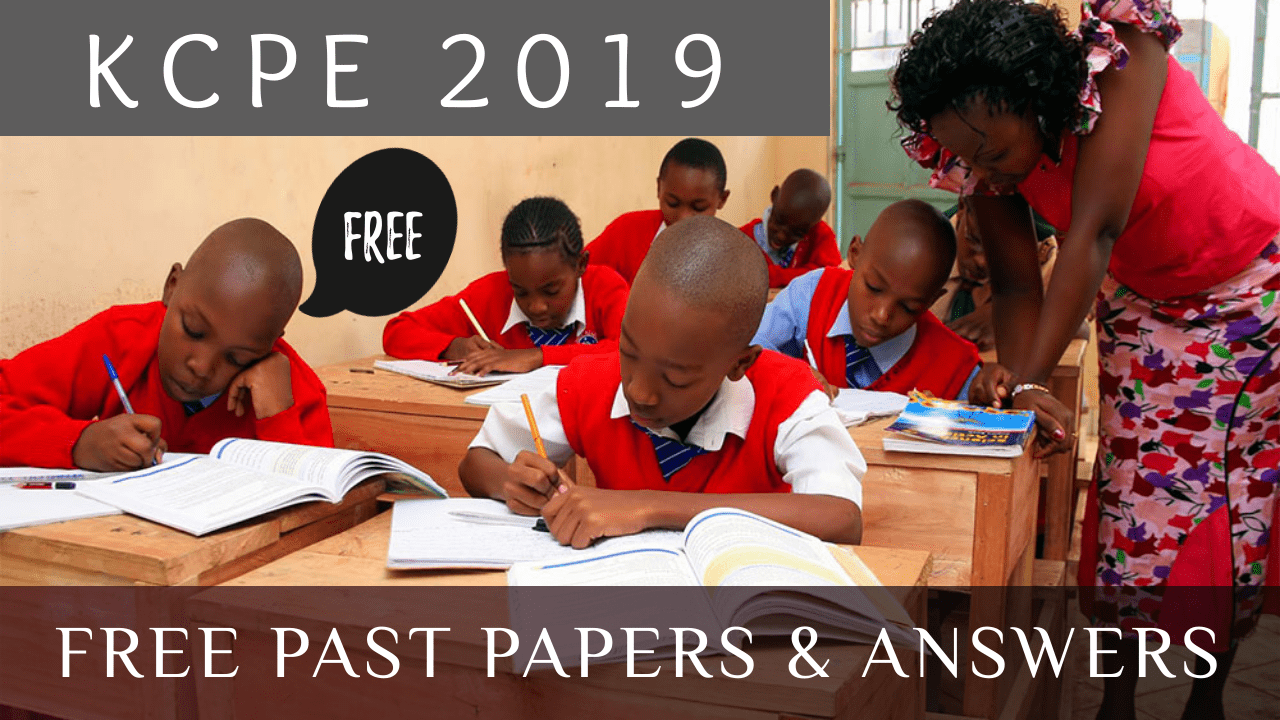
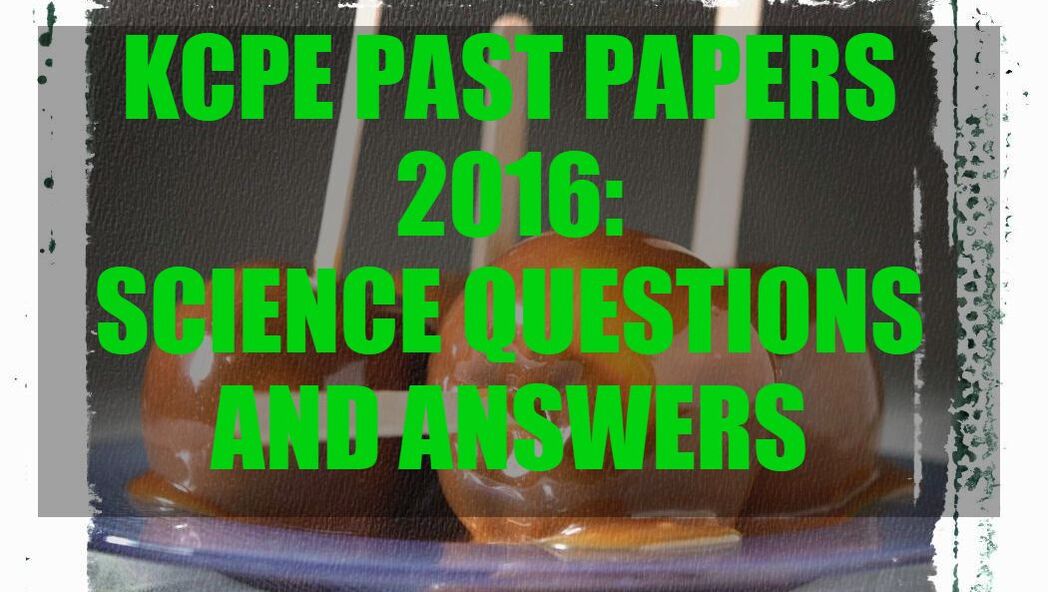
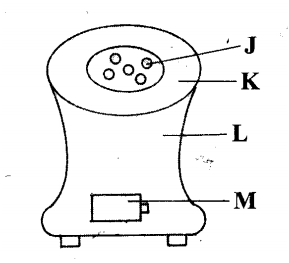

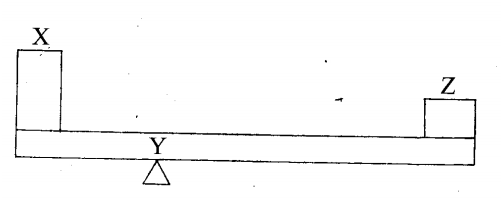
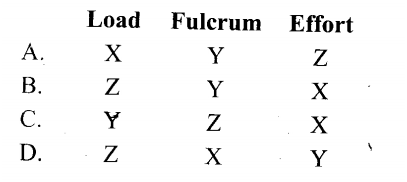
![KCPE PAST PAPERS 2016: SCIENCE QUESTIONS AND ANSWERS [QNS 1-25]](/uploads/6/0/4/0/60406393/published/dscf4247.jpg?1573293645)
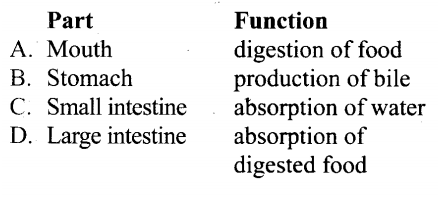
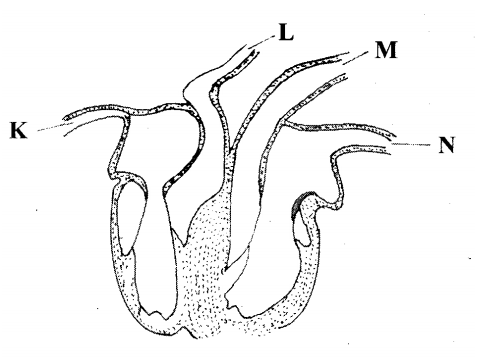

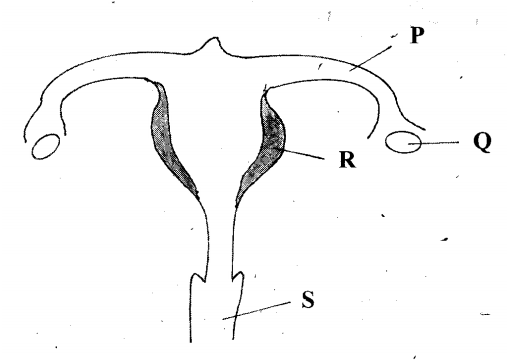
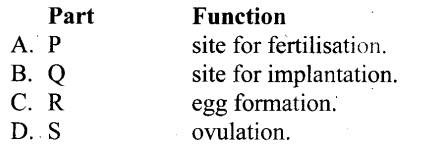

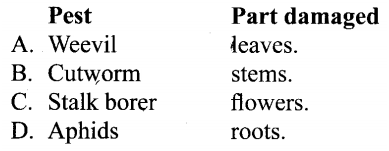

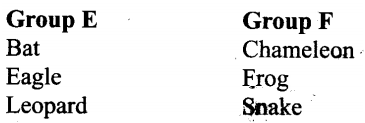
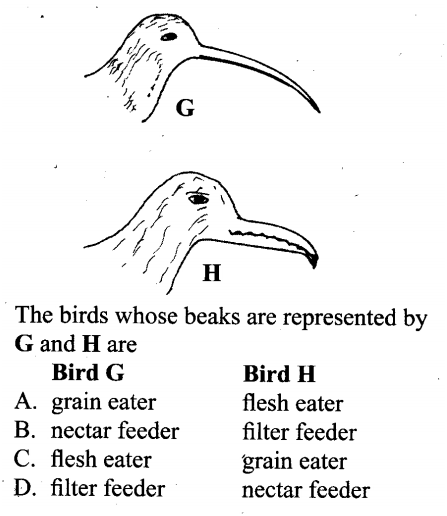
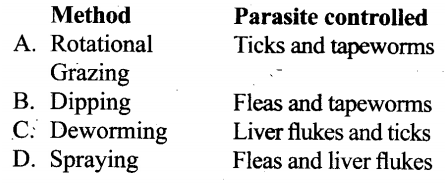
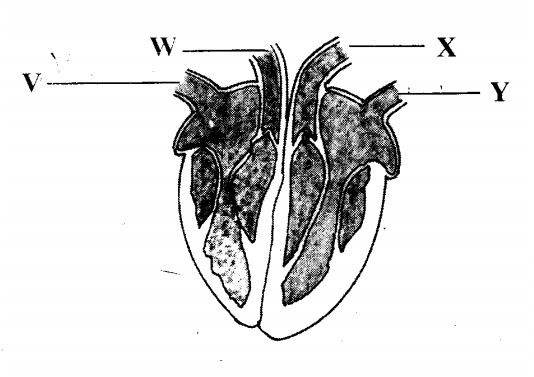
![KCPE PAST PAPERS 2015: SCIENCE QUESTIONS AND ANSWERS [QNS 26-50]](/uploads/6/0/4/0/60406393/editor/dsc00883.jpg?1573269737)
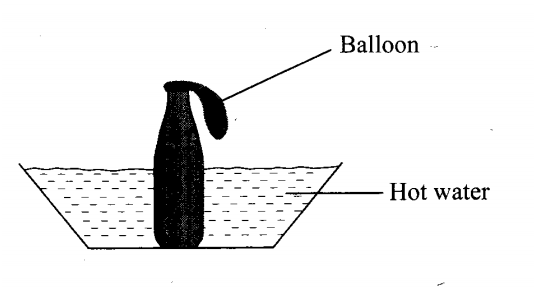
![KCPE PAST PAPERS 2015: SCIENCE QUESTIONS AND ANSWERS [QNS 1-25]](/uploads/6/0/4/0/60406393/published/img-20180521-124554.jpg?1573191269)
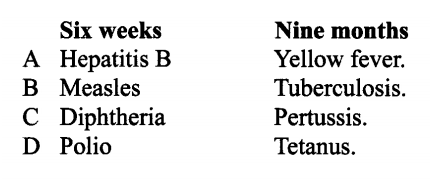
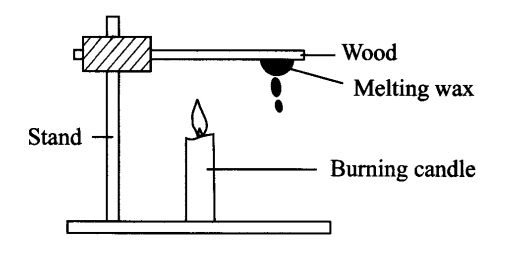
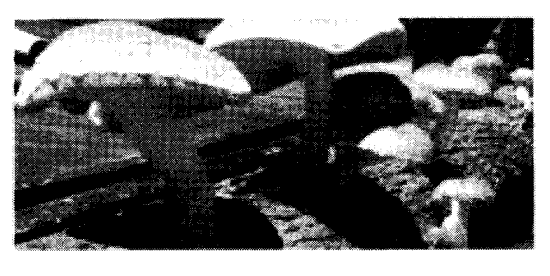
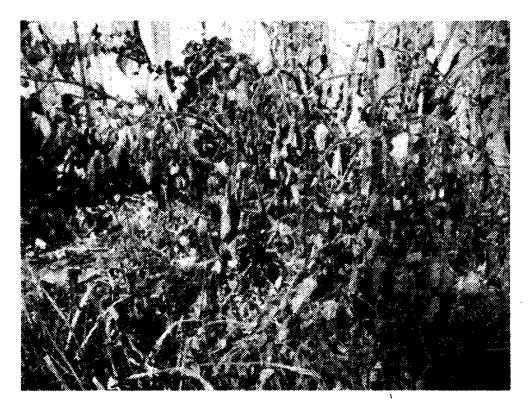
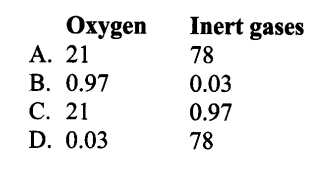

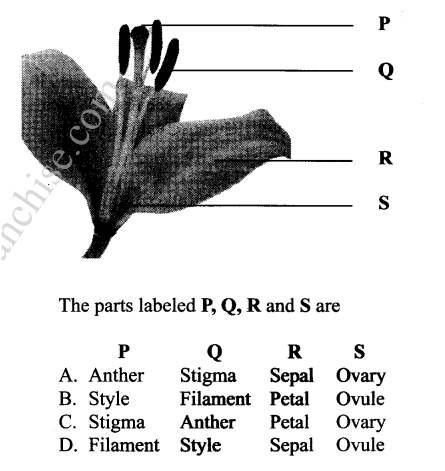

![KCPE PAST PAPERS 2014: SCIENCE QUESTIONS AND ANSWERS [QNS 26-50]](/uploads/6/0/4/0/60406393/published/dsc05762.jpg?1573182512)
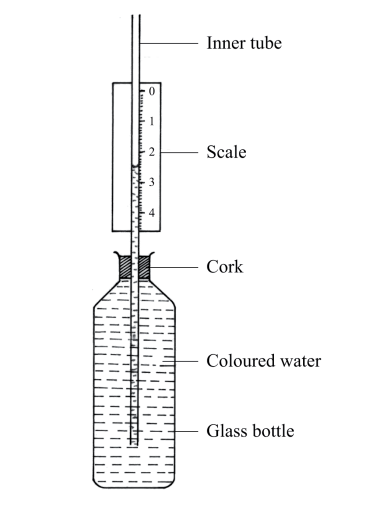
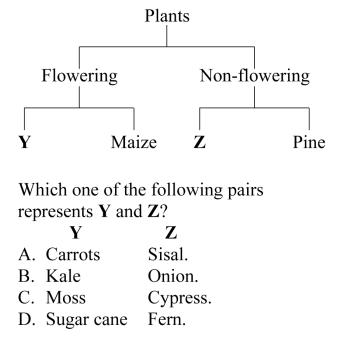
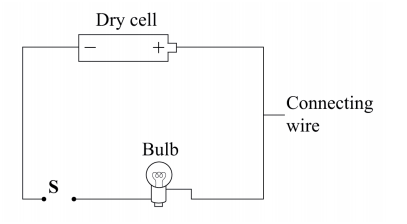

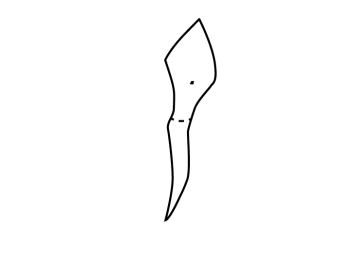
![KCPE PAST PAPERS 2014: SCIENCE QUESTIONS AND ANSWERS [QNS 01-25]](/uploads/6/0/4/0/60406393/published/dsc00684.jpg?1573097585)
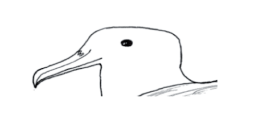
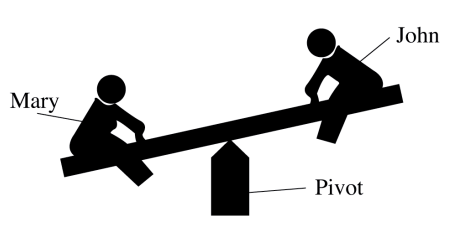
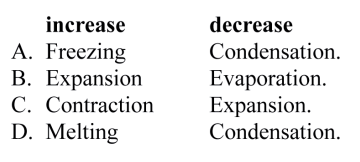
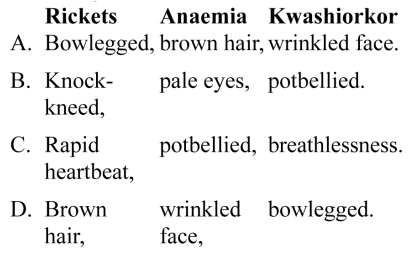
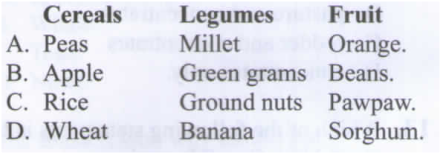
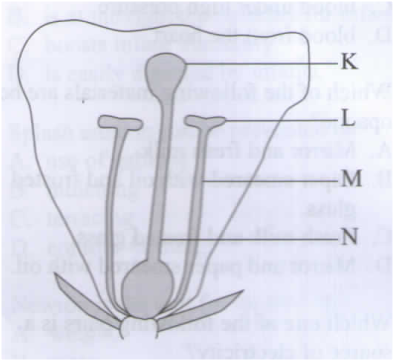
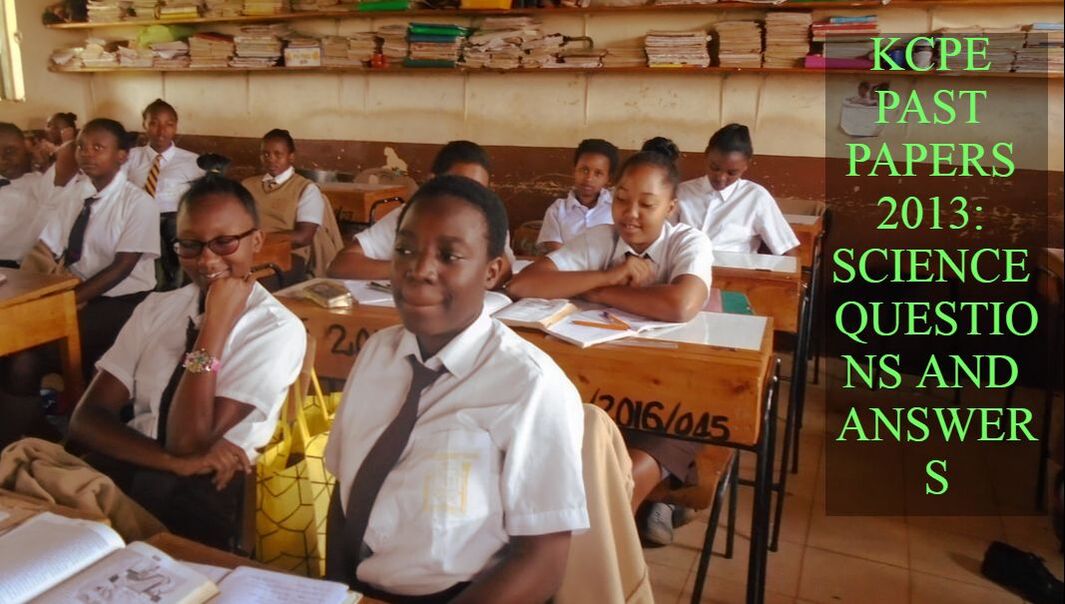
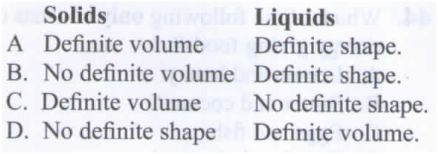
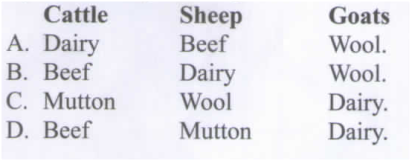
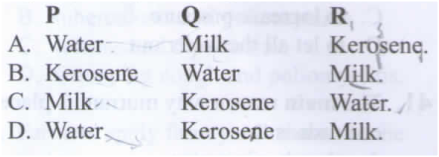
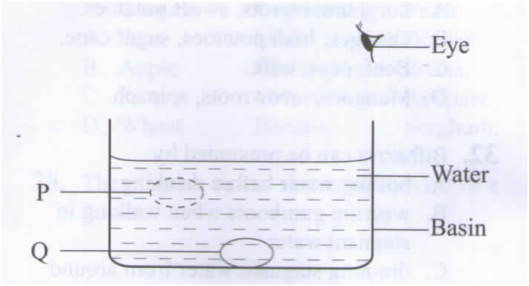
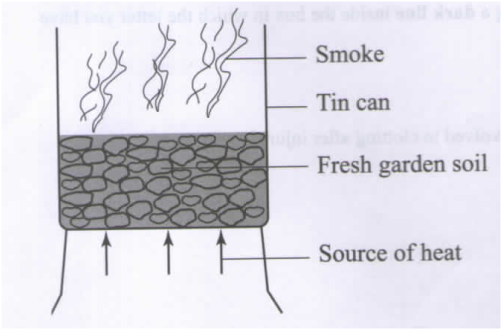
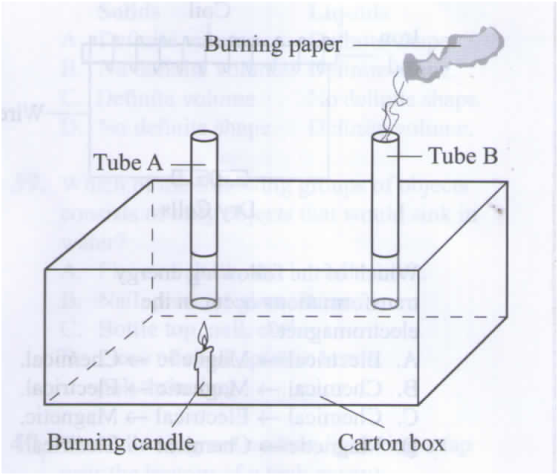
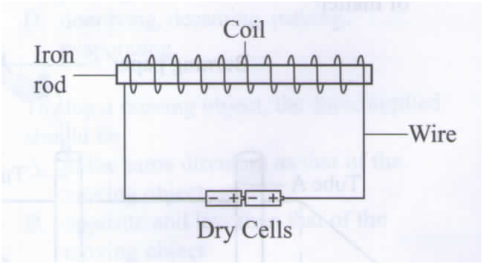
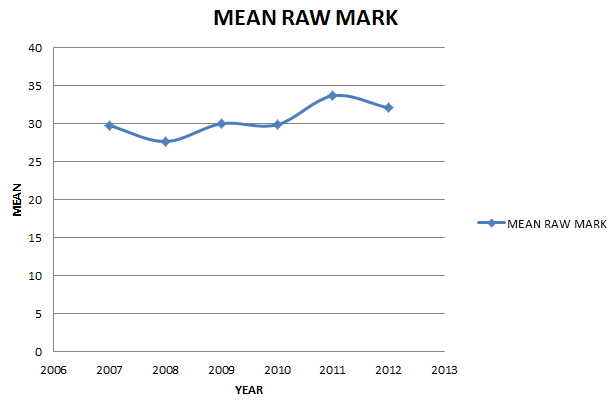

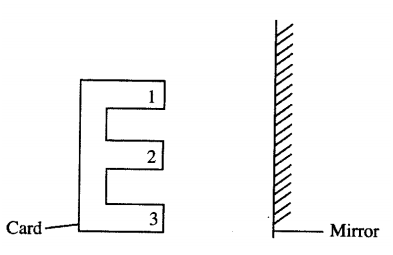
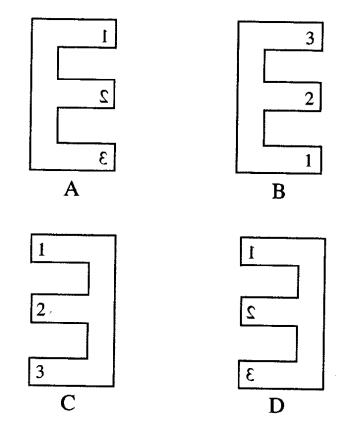
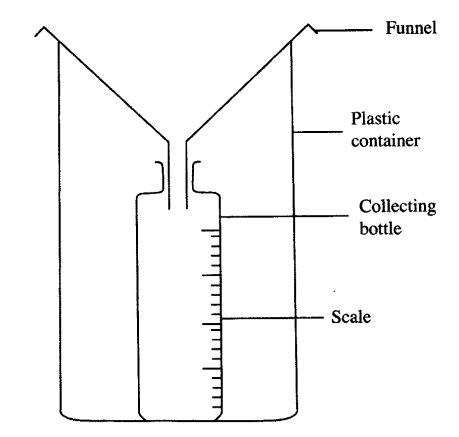
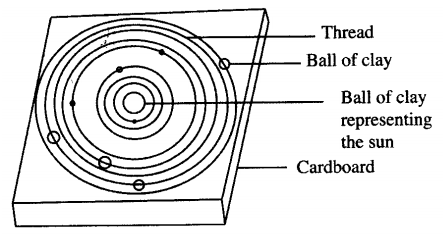
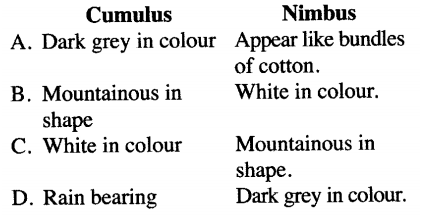

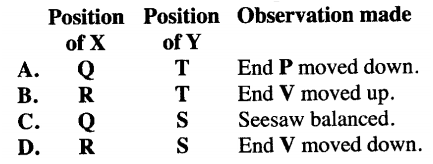
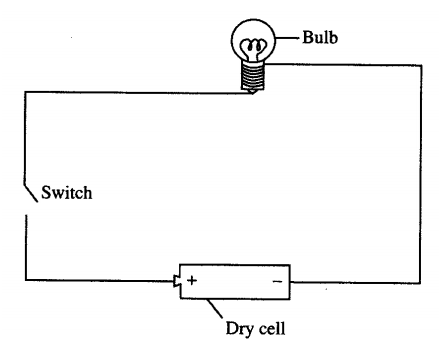
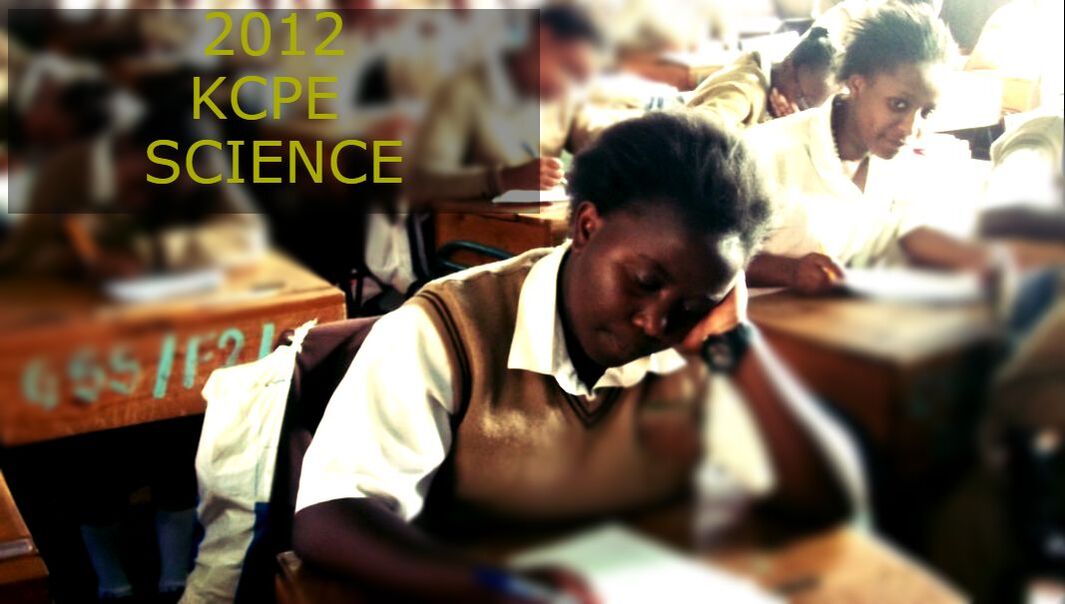
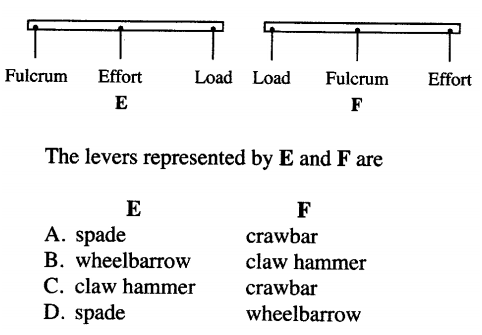
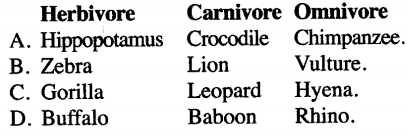
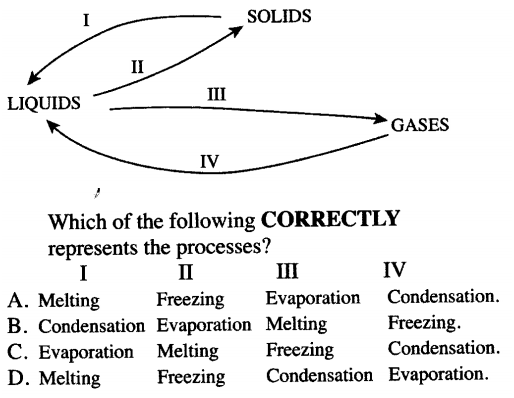


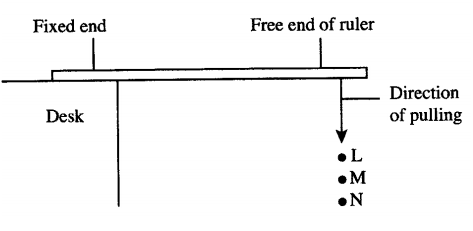
![KCPE PAST PAPERS 2005: SCIENCE QUESTIONS AND ANSWERS [QNS 26-50]](/uploads/6/0/4/0/60406393/published/dscf4204.jpg?1572776969)
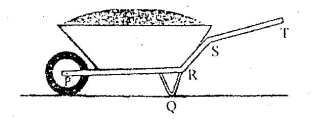
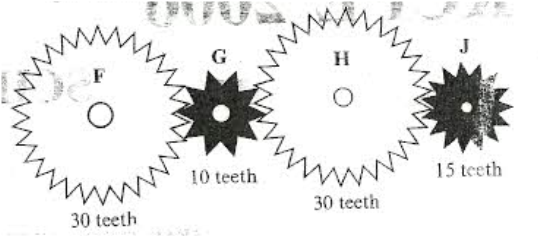
![KCPE PAST PAPERS 2005: SCIENCE QUESTIONS AND ANSWERS [QNS 01-25]](/uploads/6/0/4/0/60406393/published/dsc00886.jpg?1572758563)
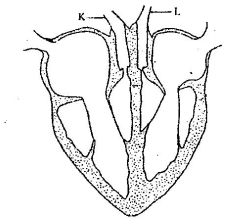
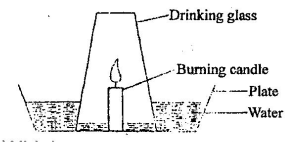

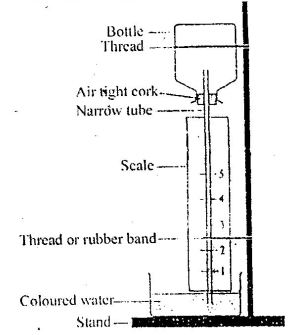
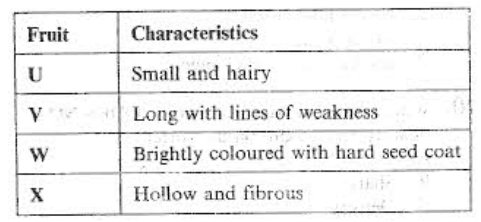
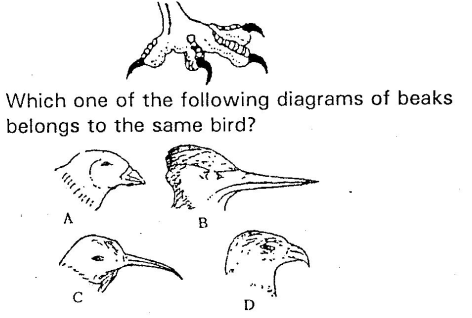

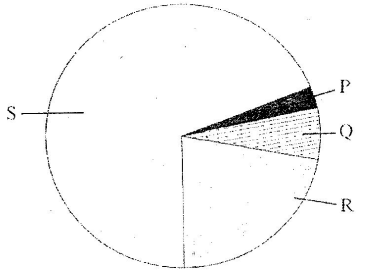
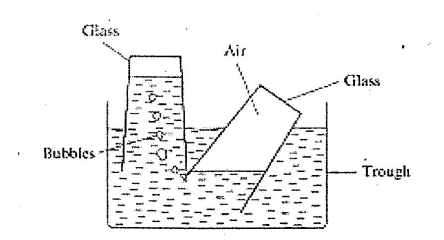
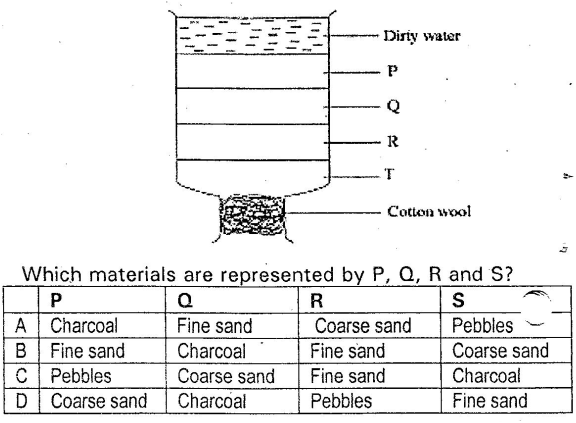
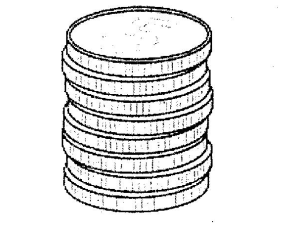
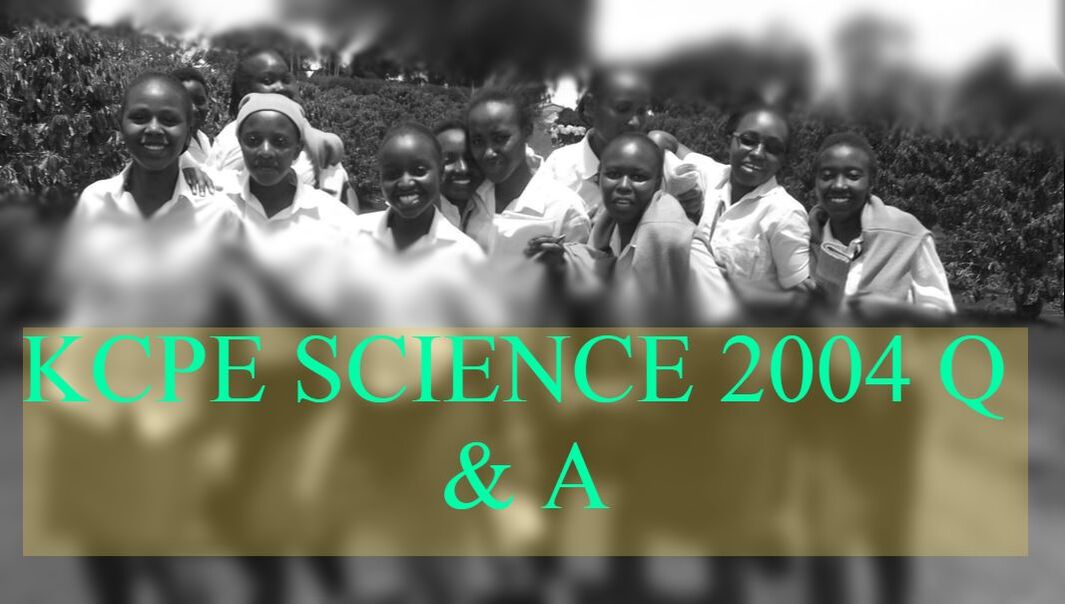

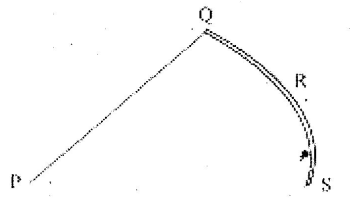
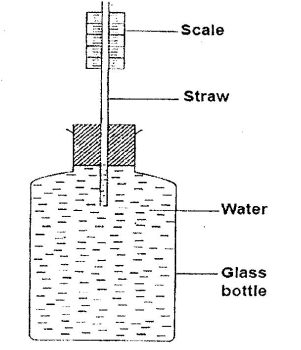
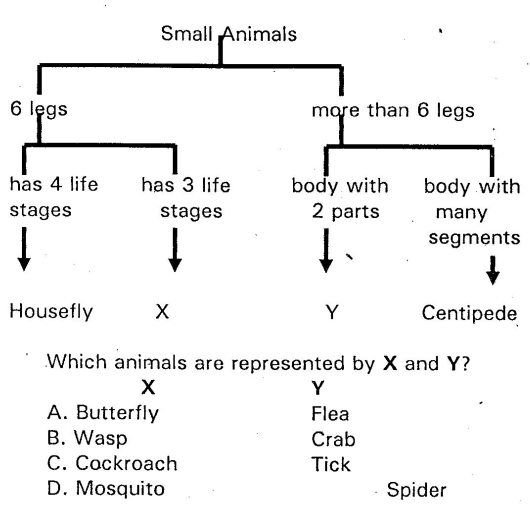
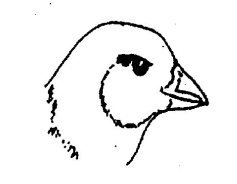
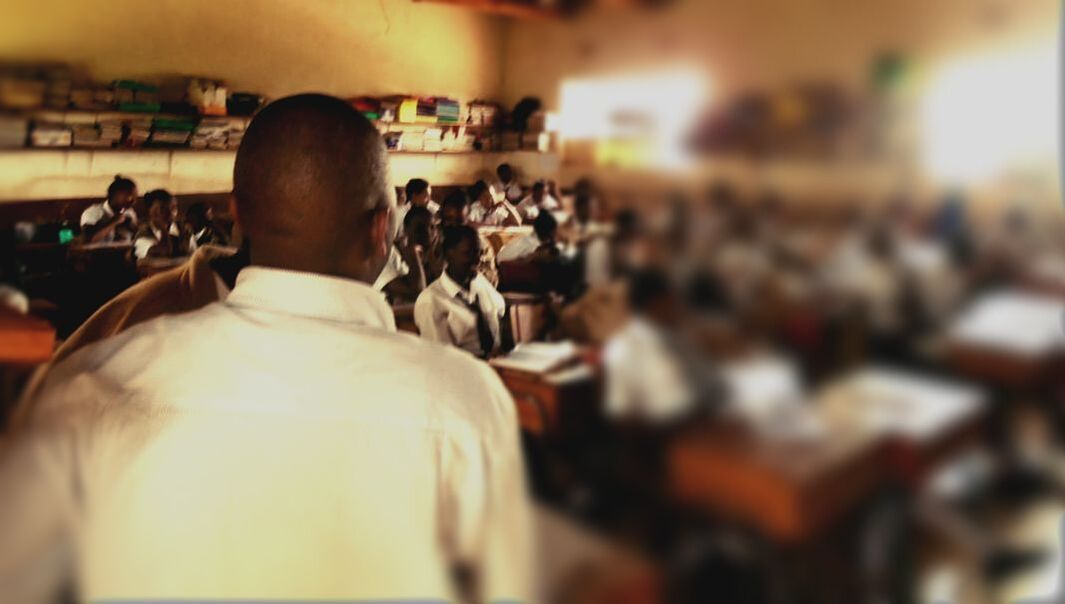
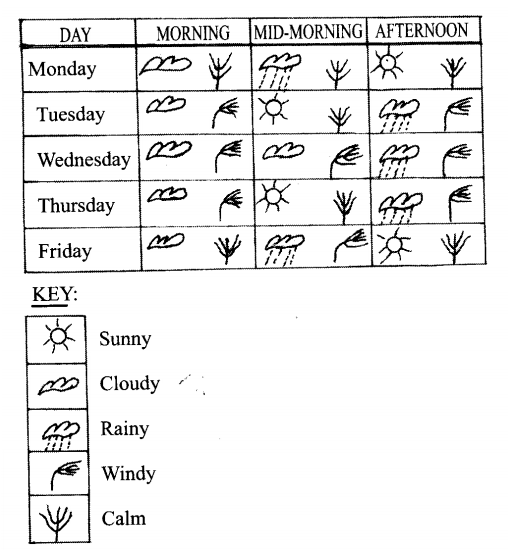
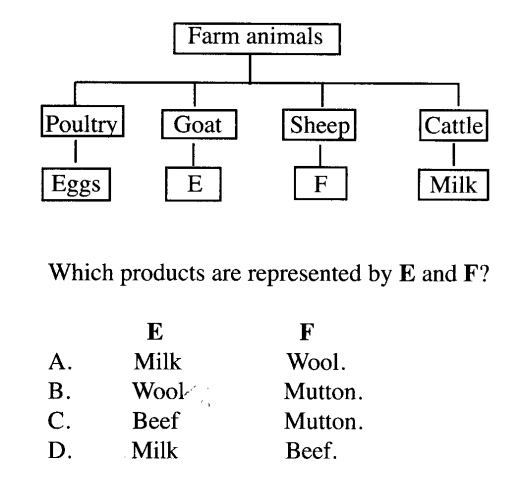
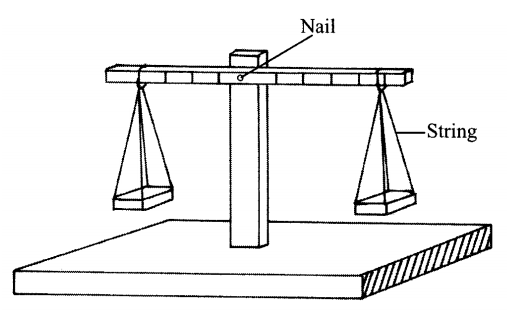
![KCPE PAST PAPERS 2011: SCIENCE QUESTIONS AND ANSWERS [QNS 01-25]](/uploads/6/0/4/0/60406393/published/dsc00178.jpg?1572495858)
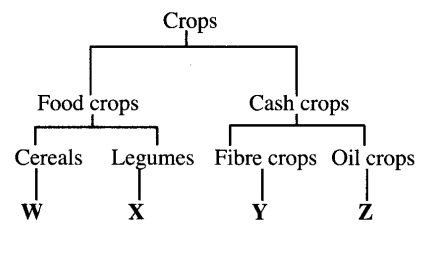
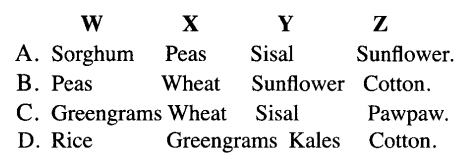
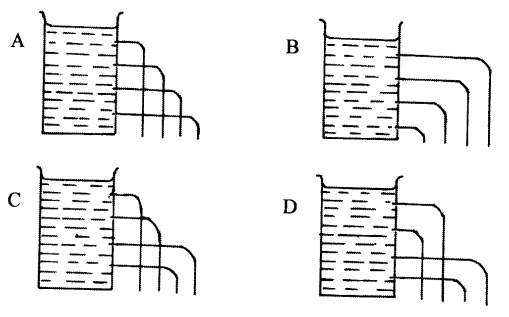
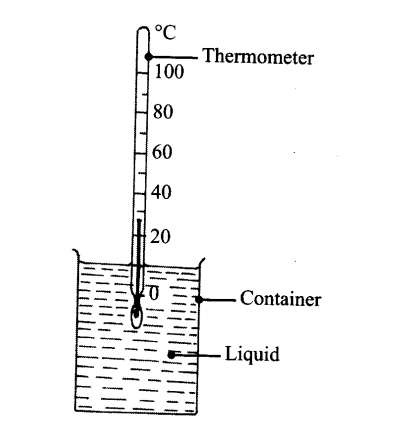
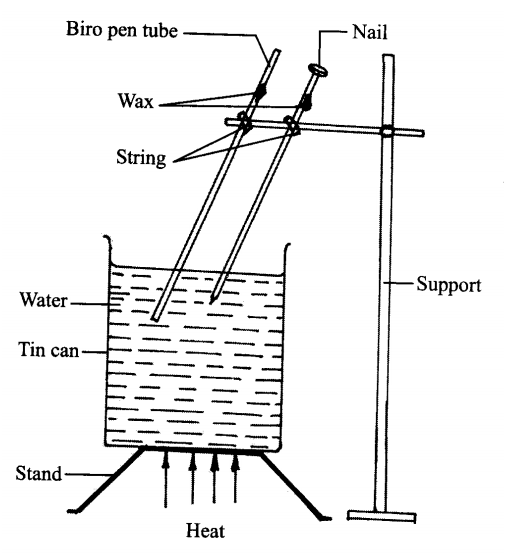
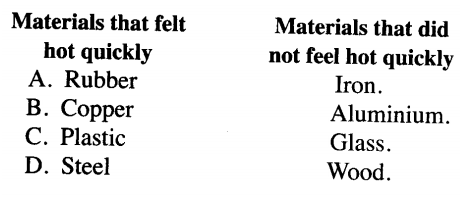
![KCPE PAST PAPERS 2009: SCIENCE QUESTIONS AND ANSWERS [QNS 26-50]](/uploads/6/0/4/0/60406393/published/dscf6061.jpg?1572460977)
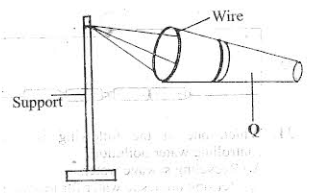
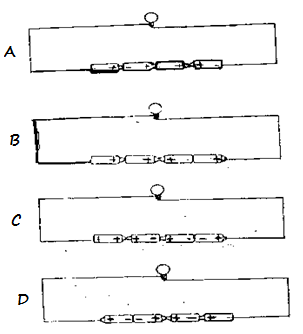

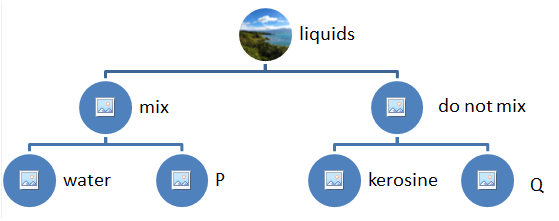
![KCPE PAST PAPERS 2009: SCIENCE QUESTIONS AND ANSWERS [QNS 1-25]](/uploads/6/0/4/0/60406393/published/students3.jpg?1572415895)
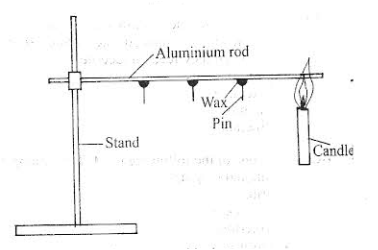
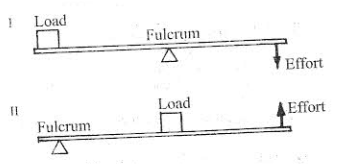
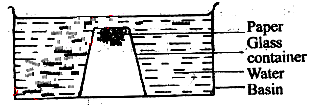
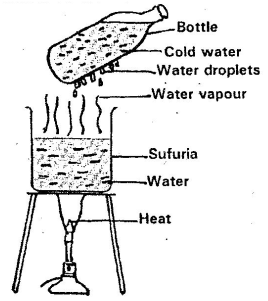
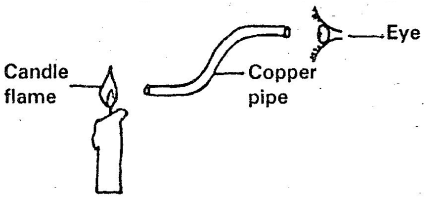
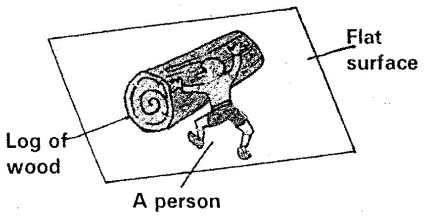
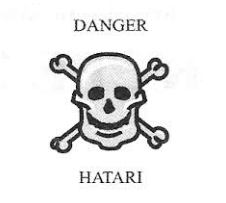
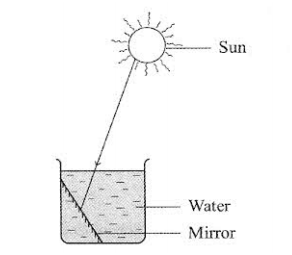
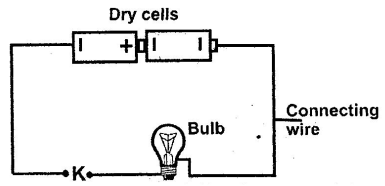
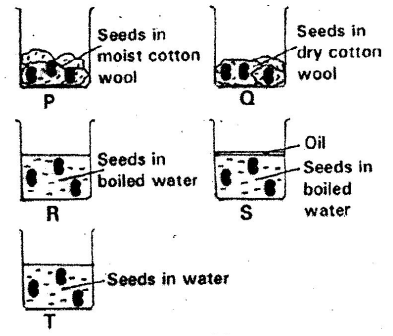
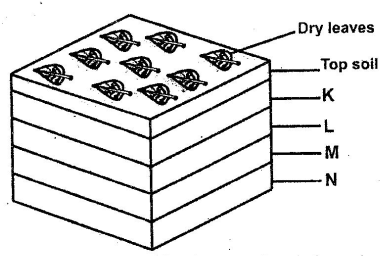
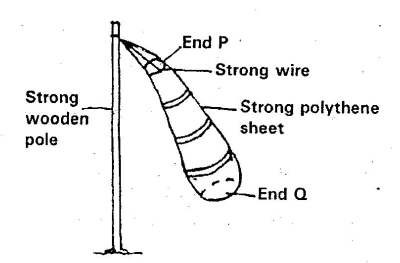
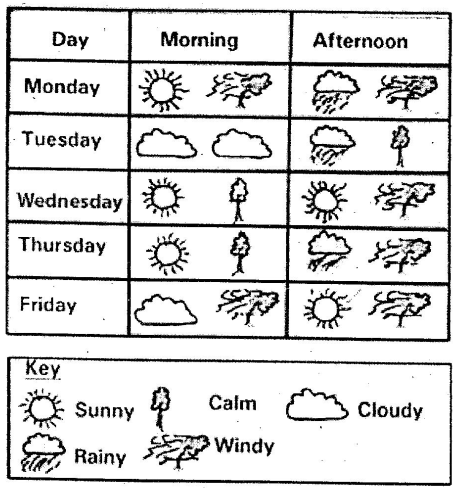


 RSS Feed
RSS Feed

